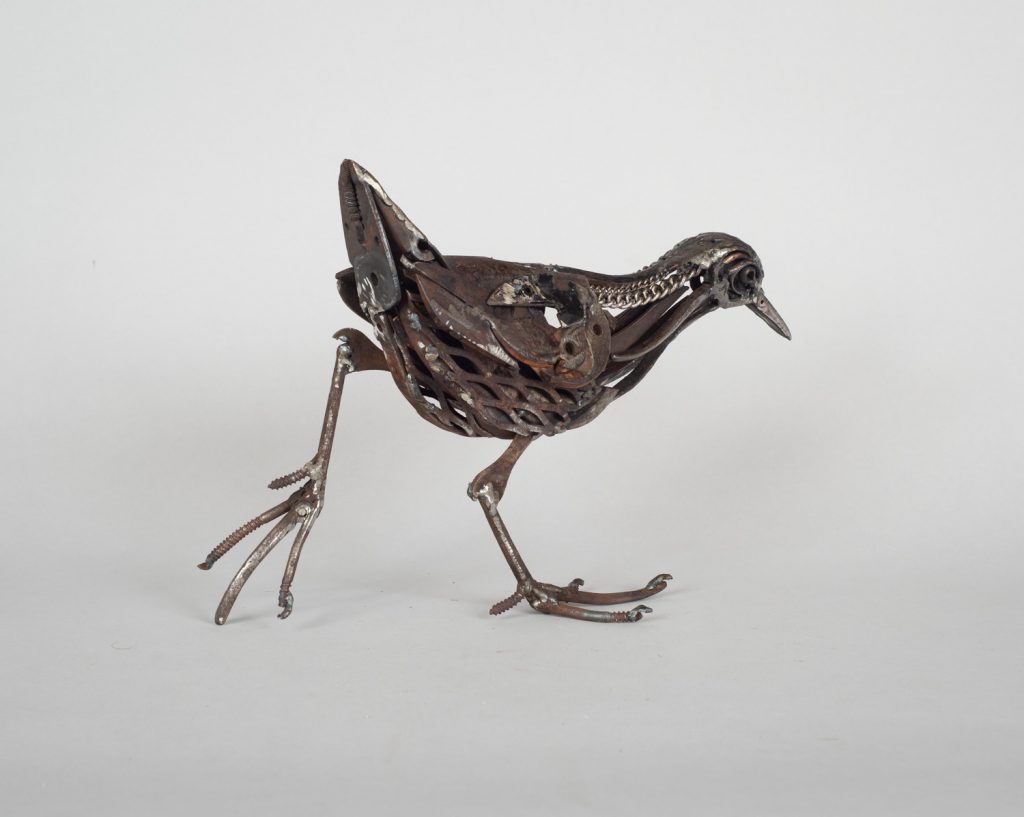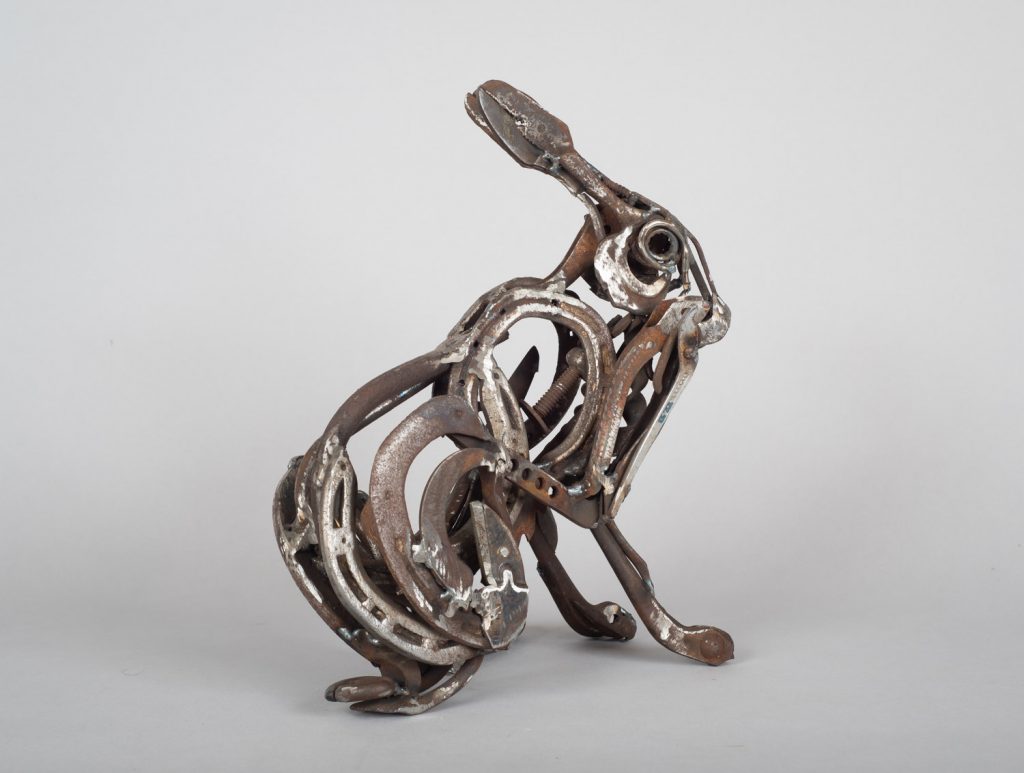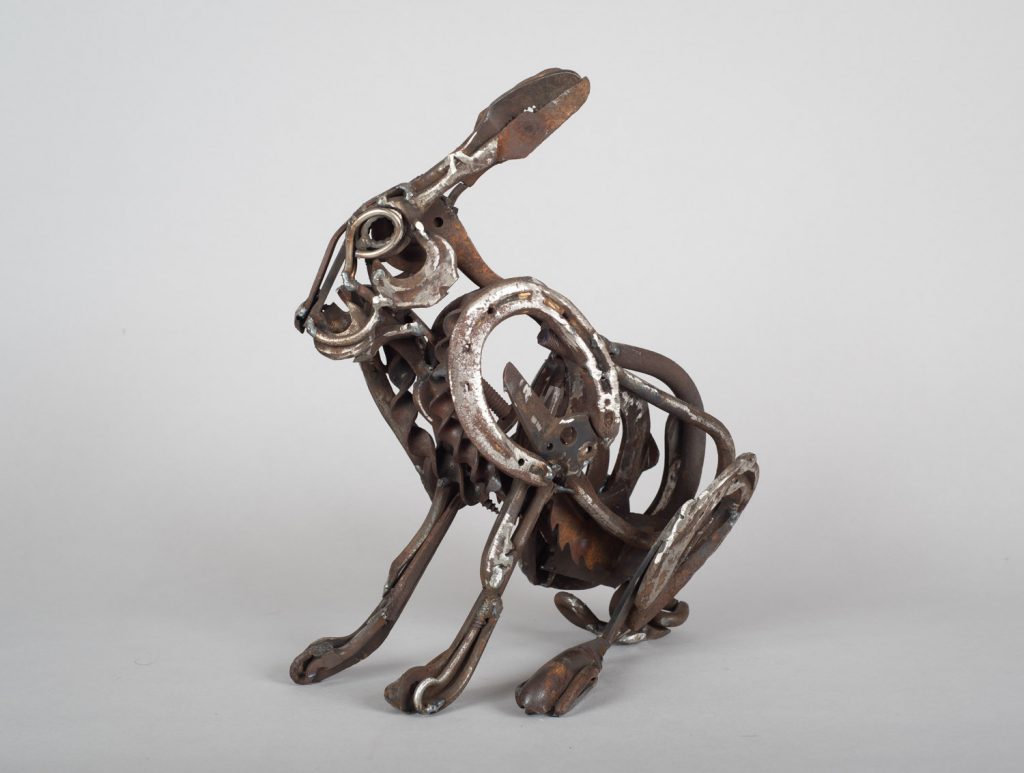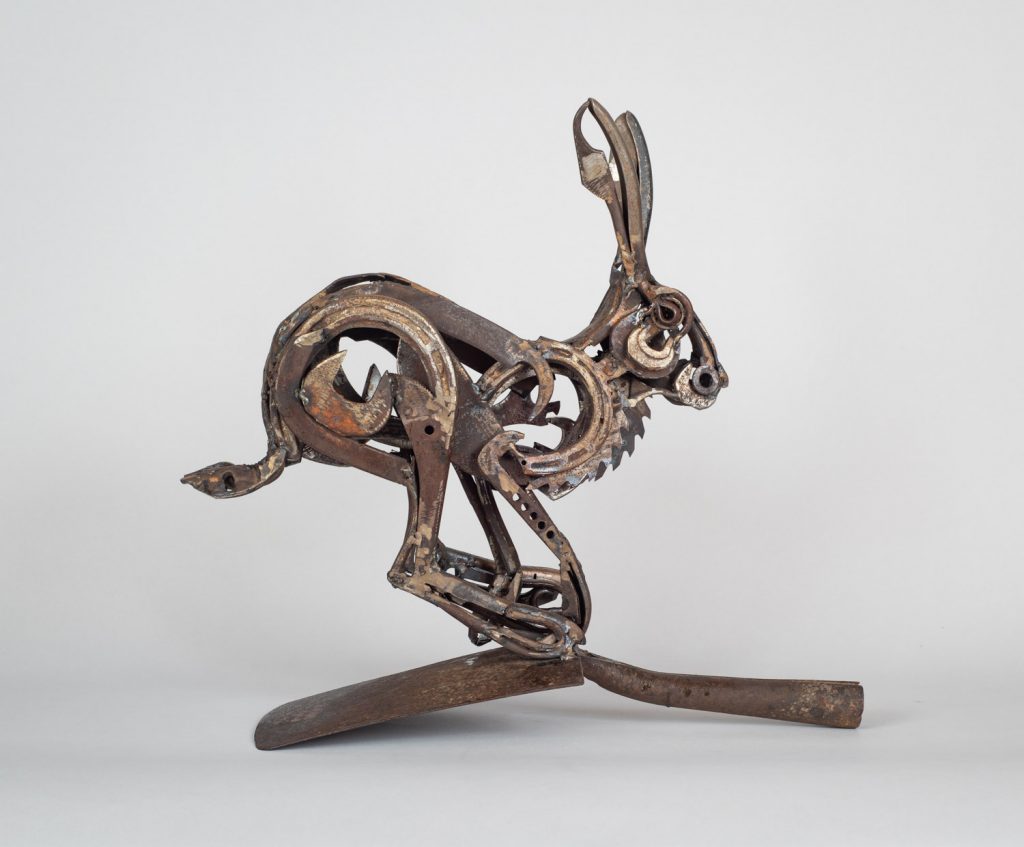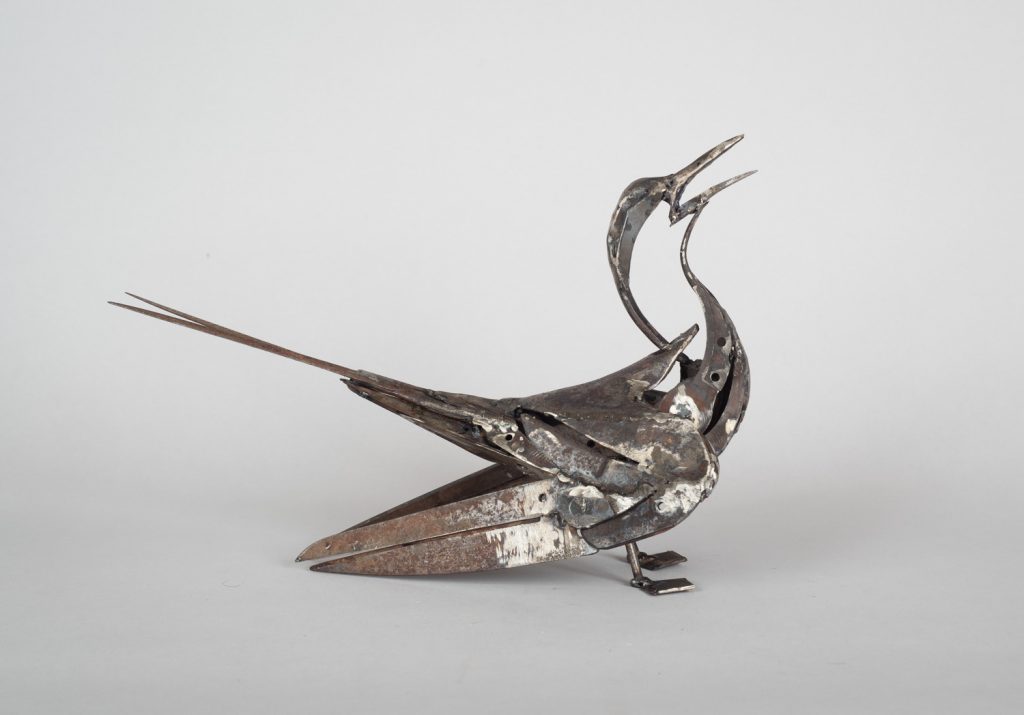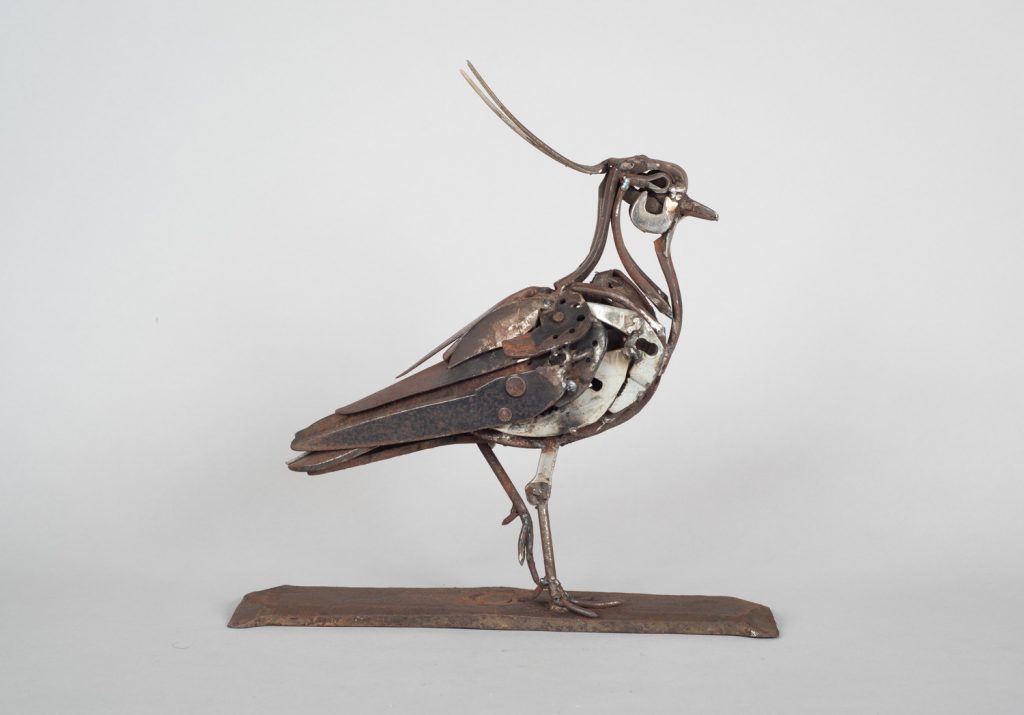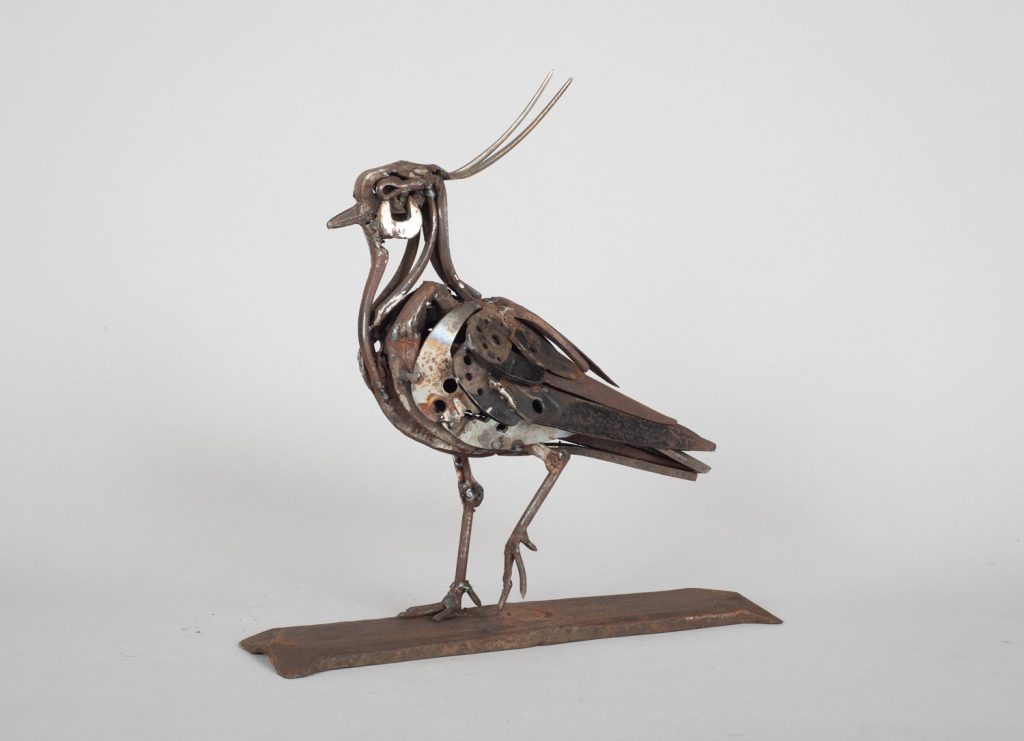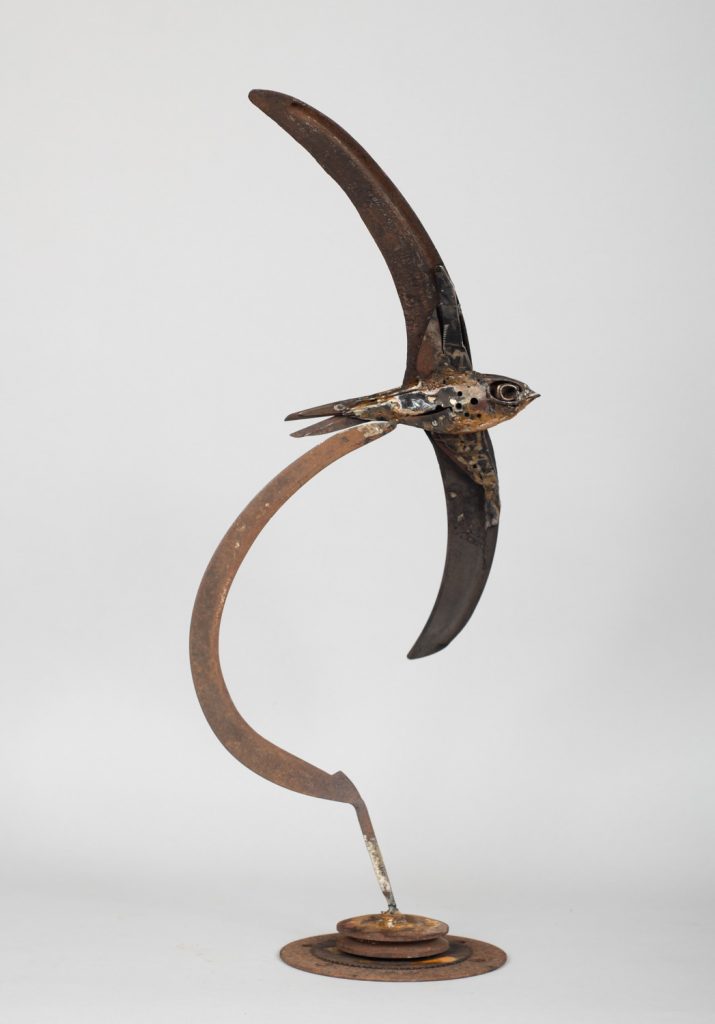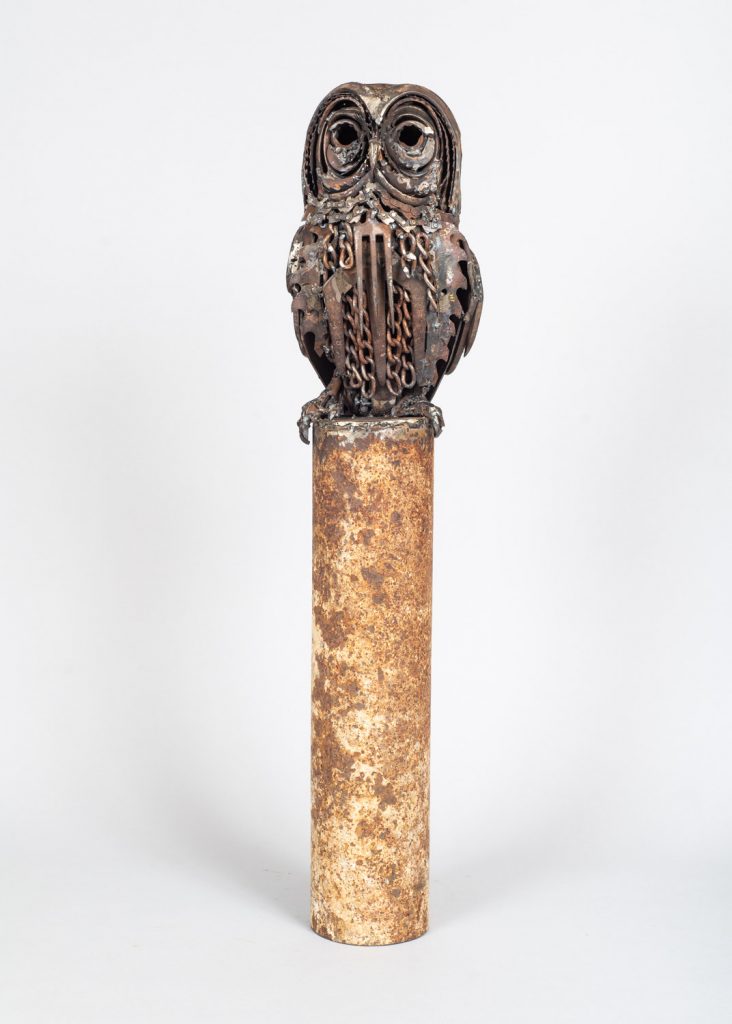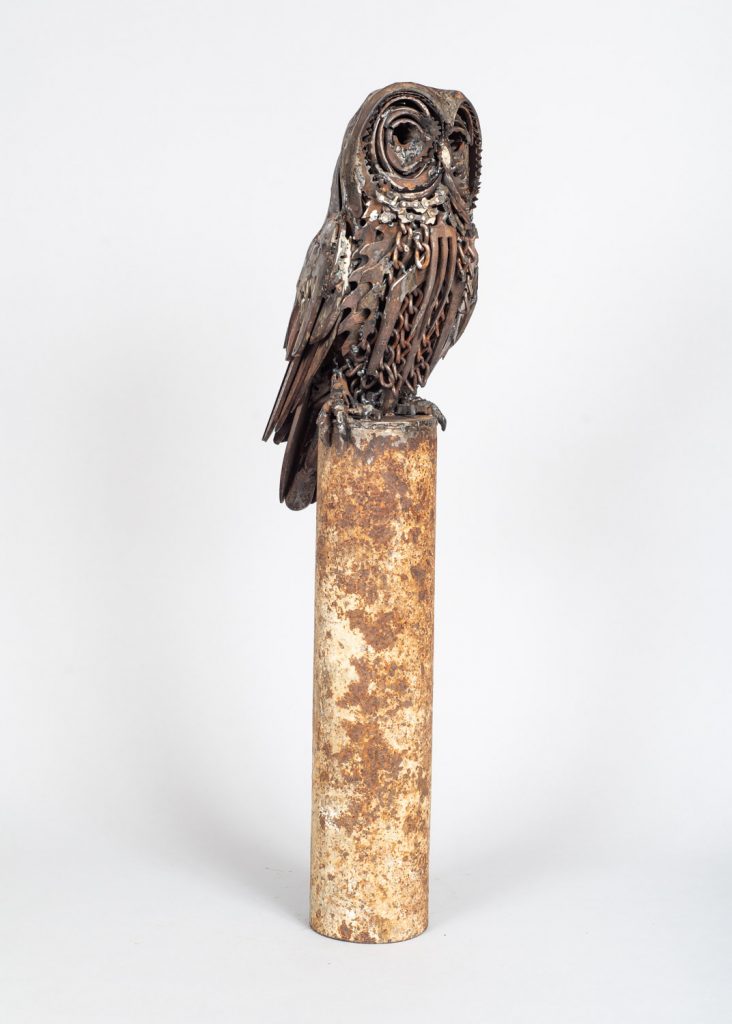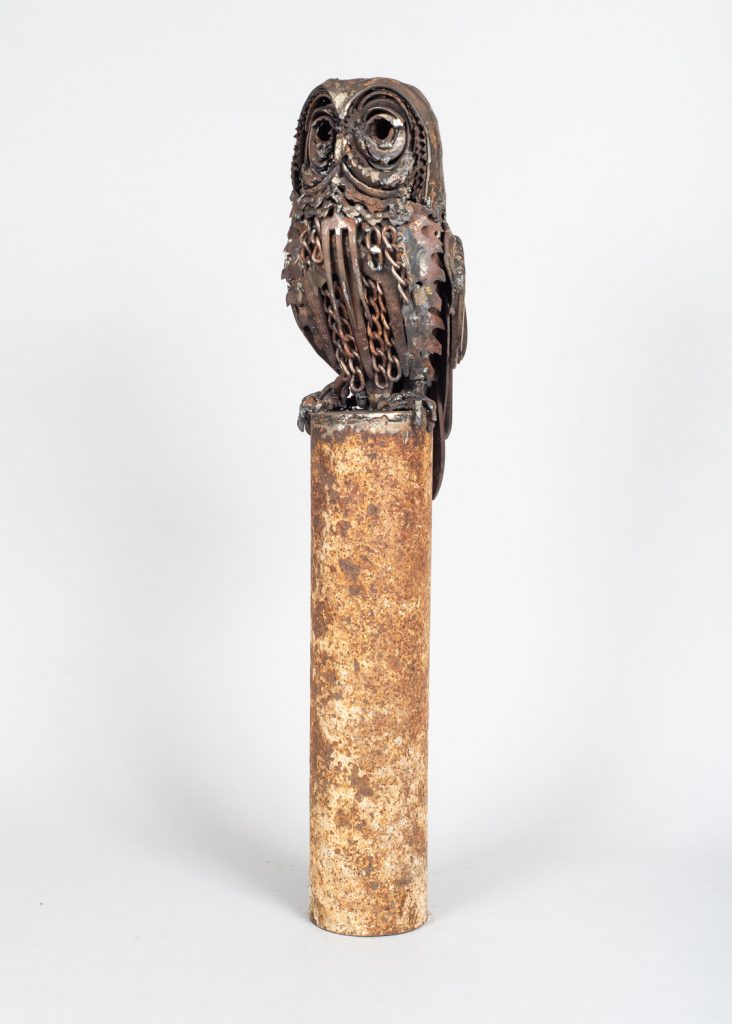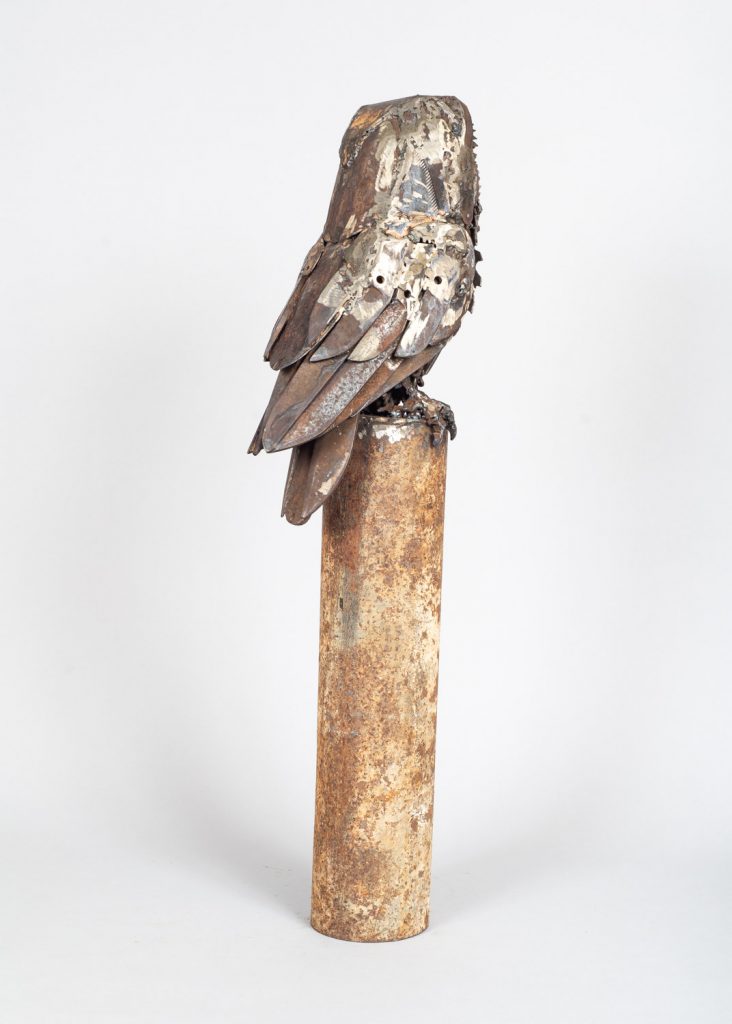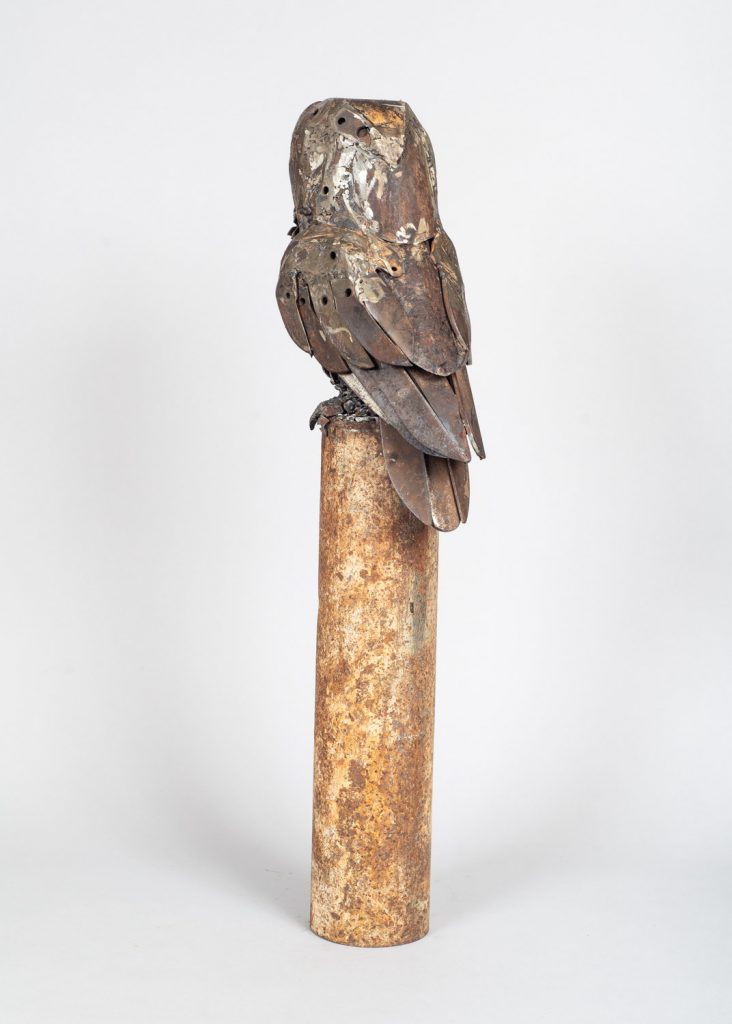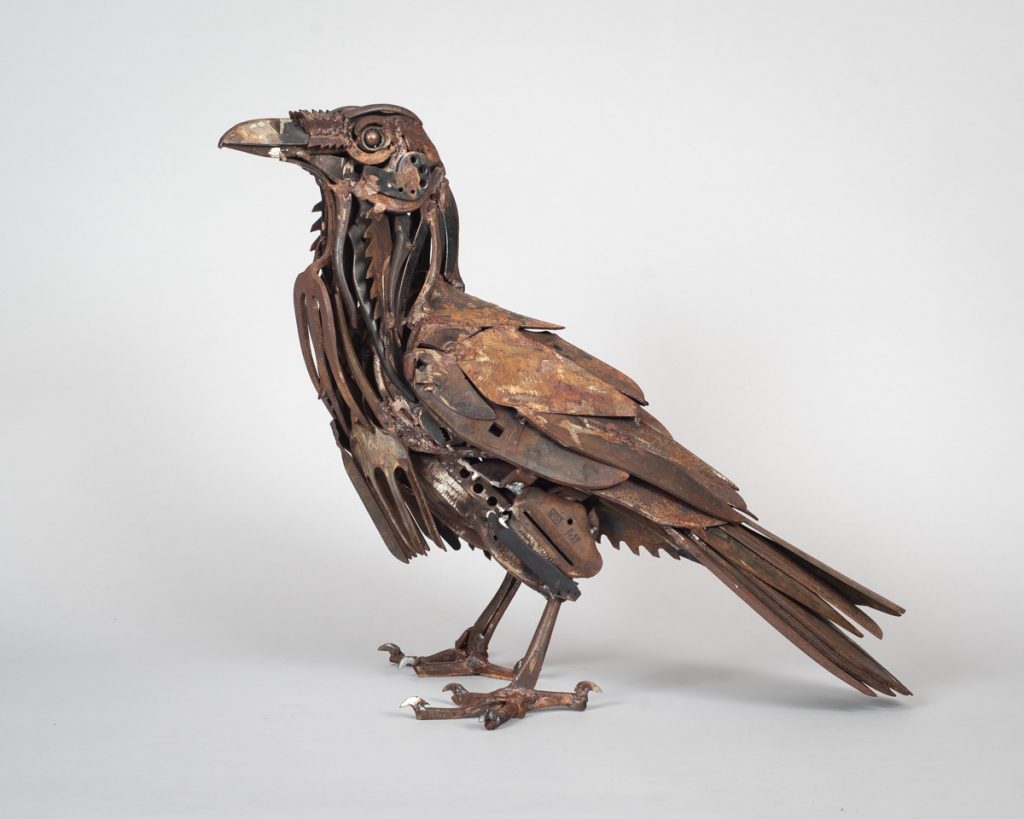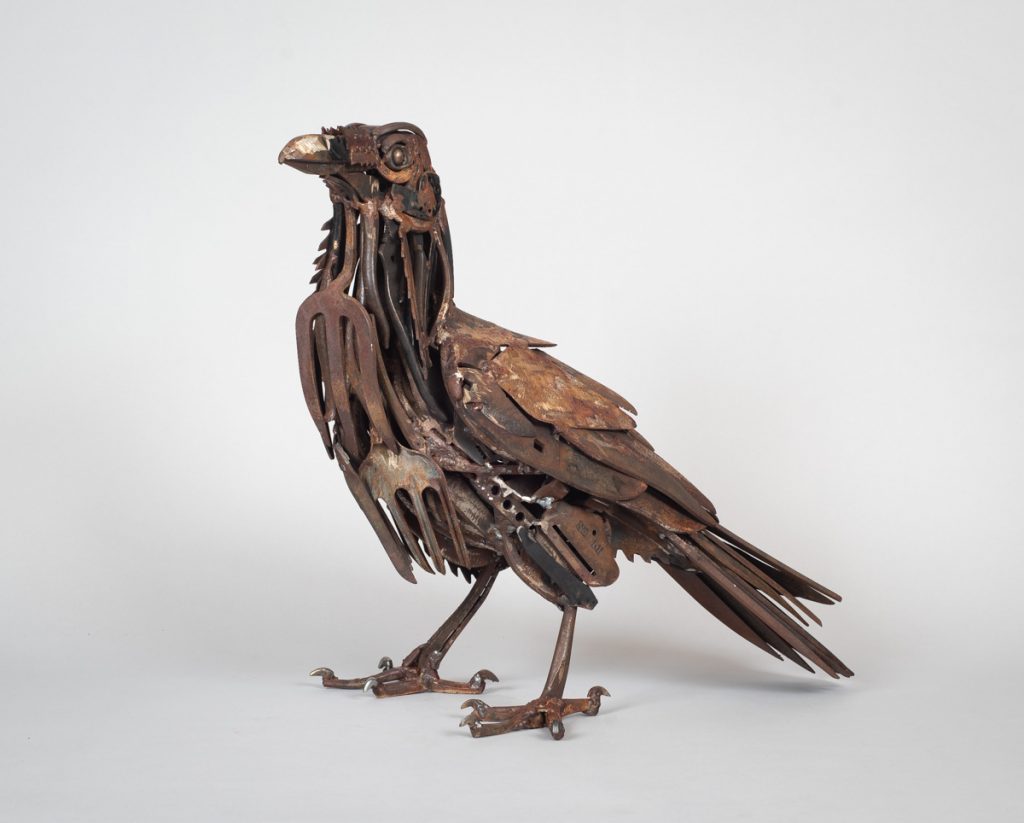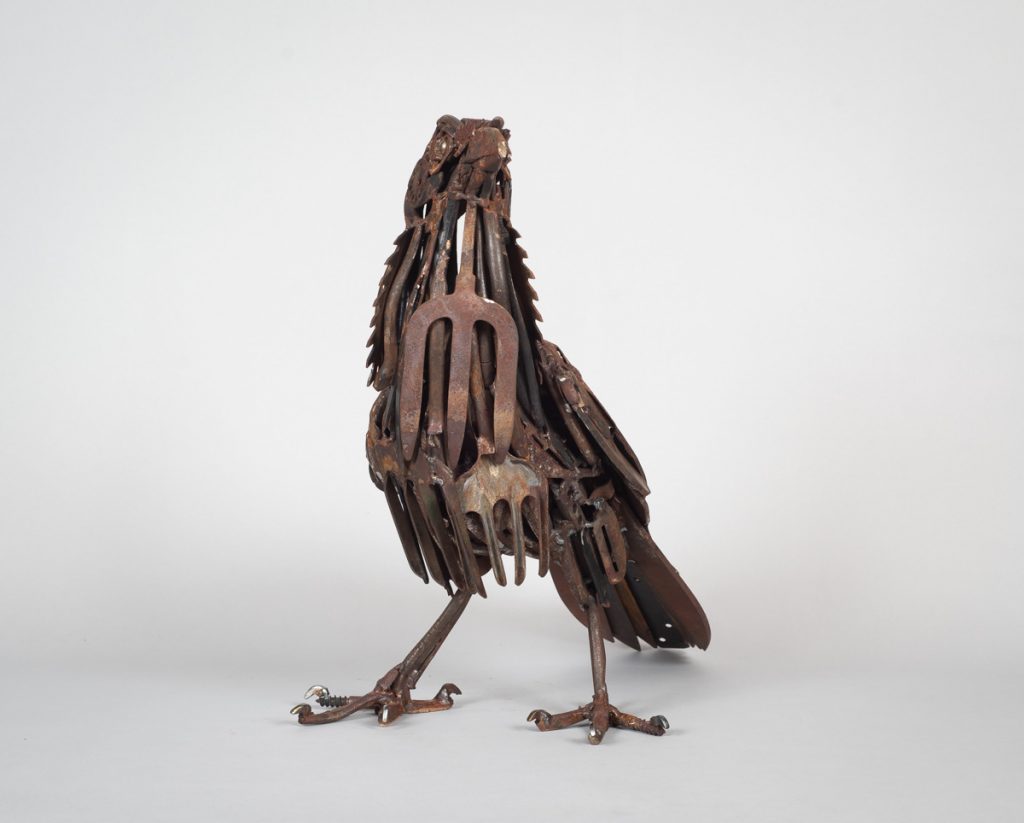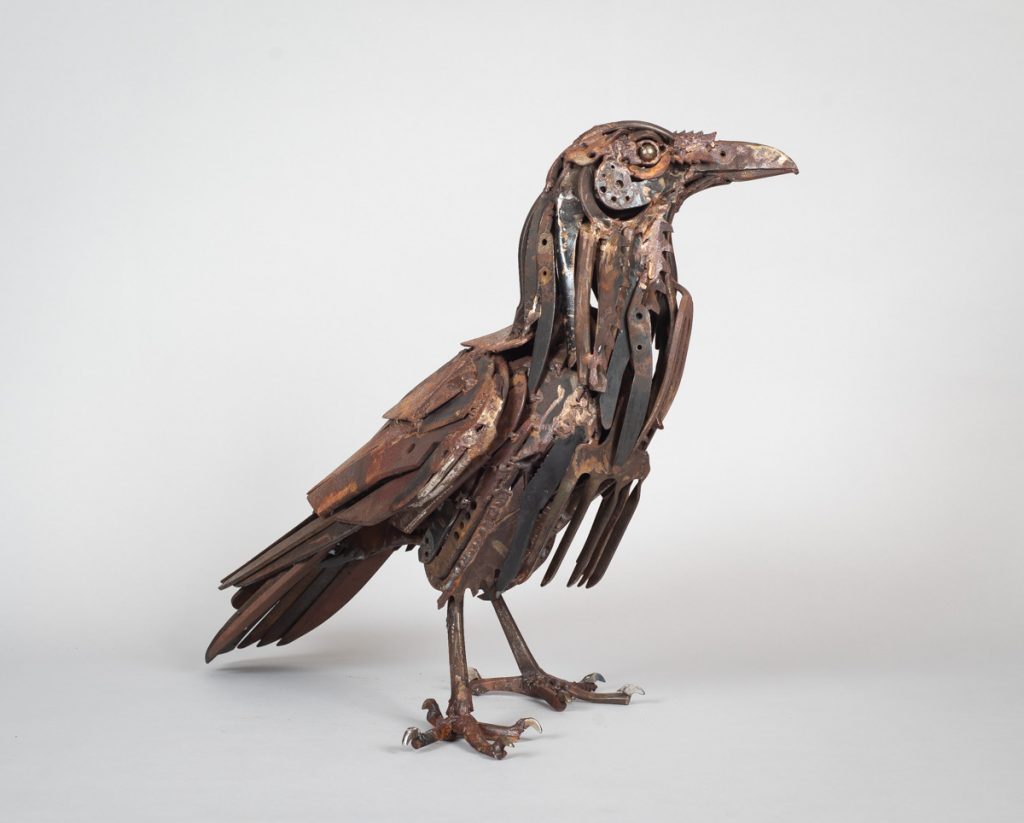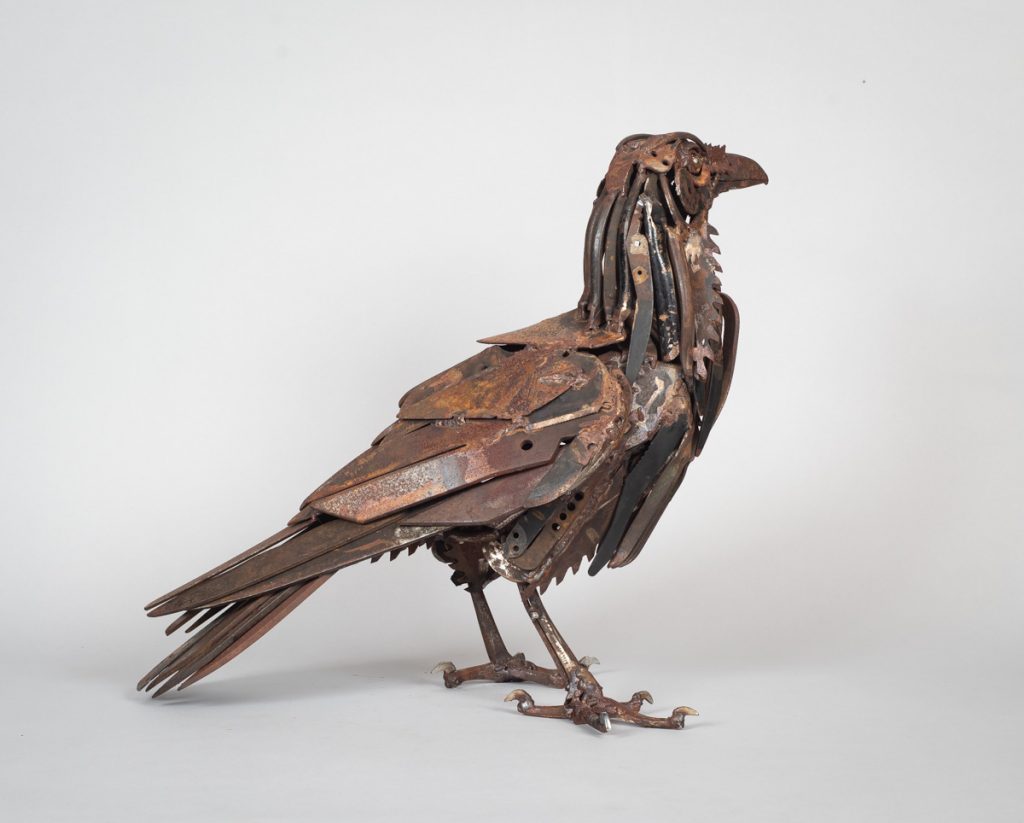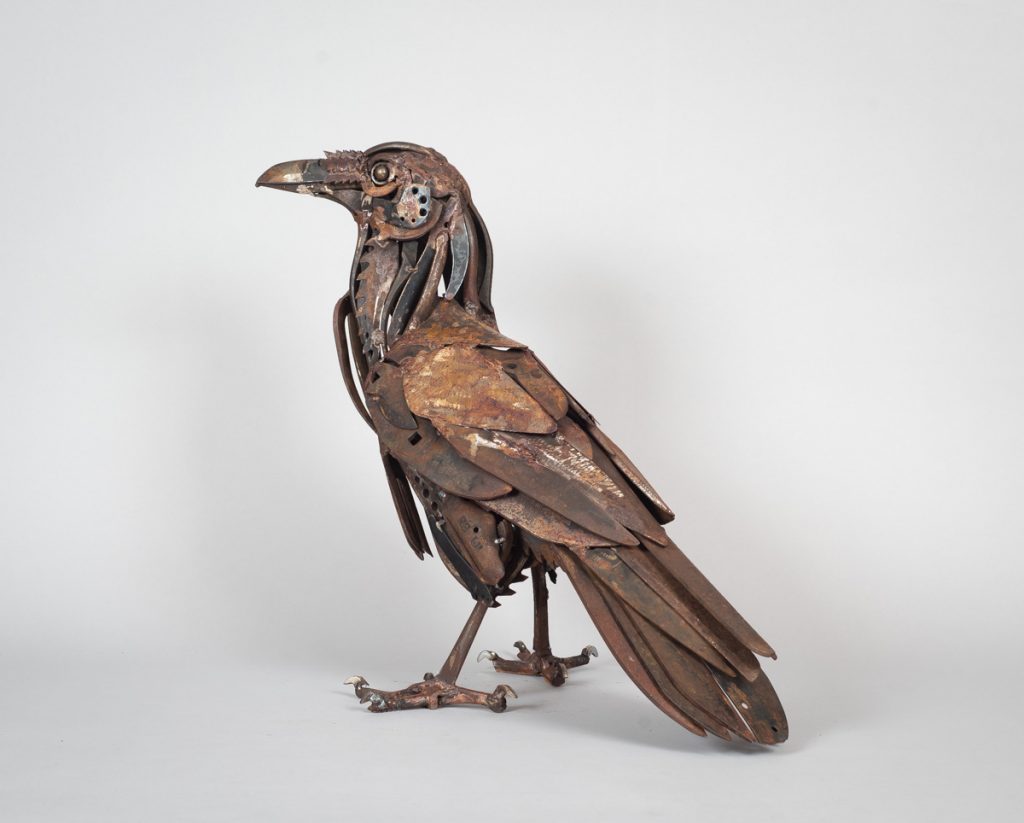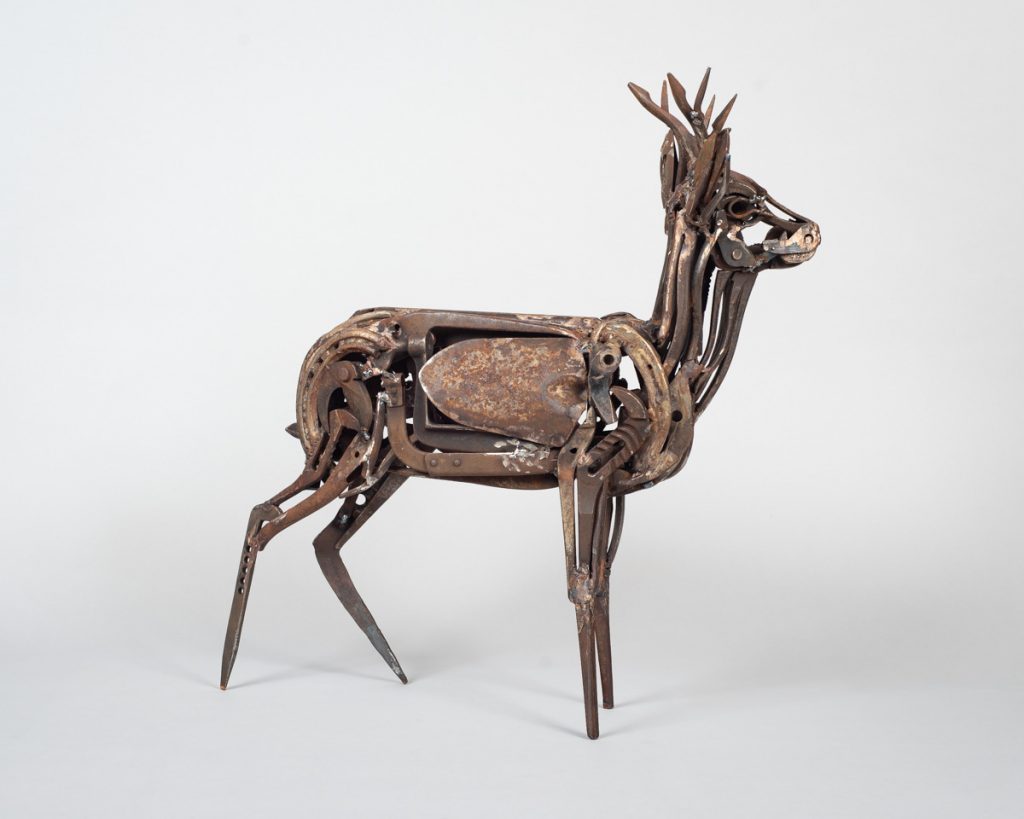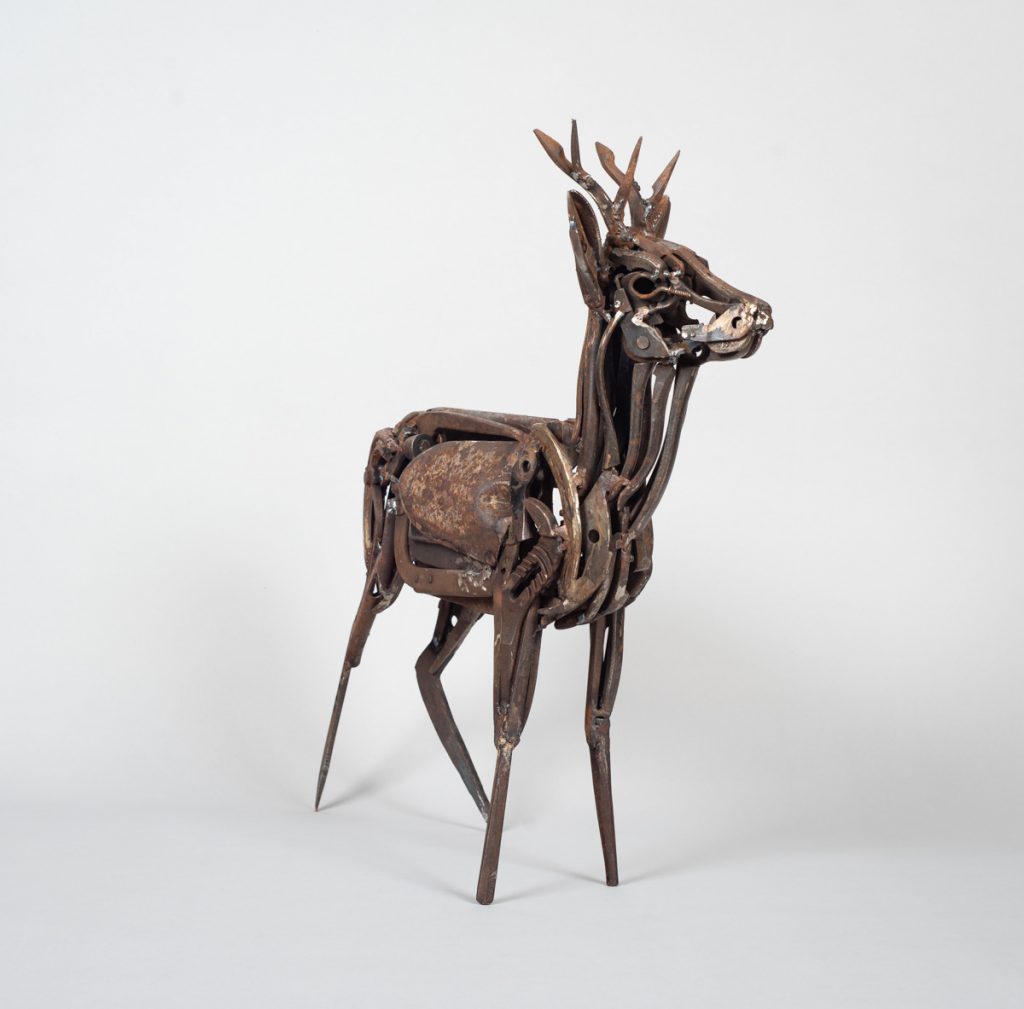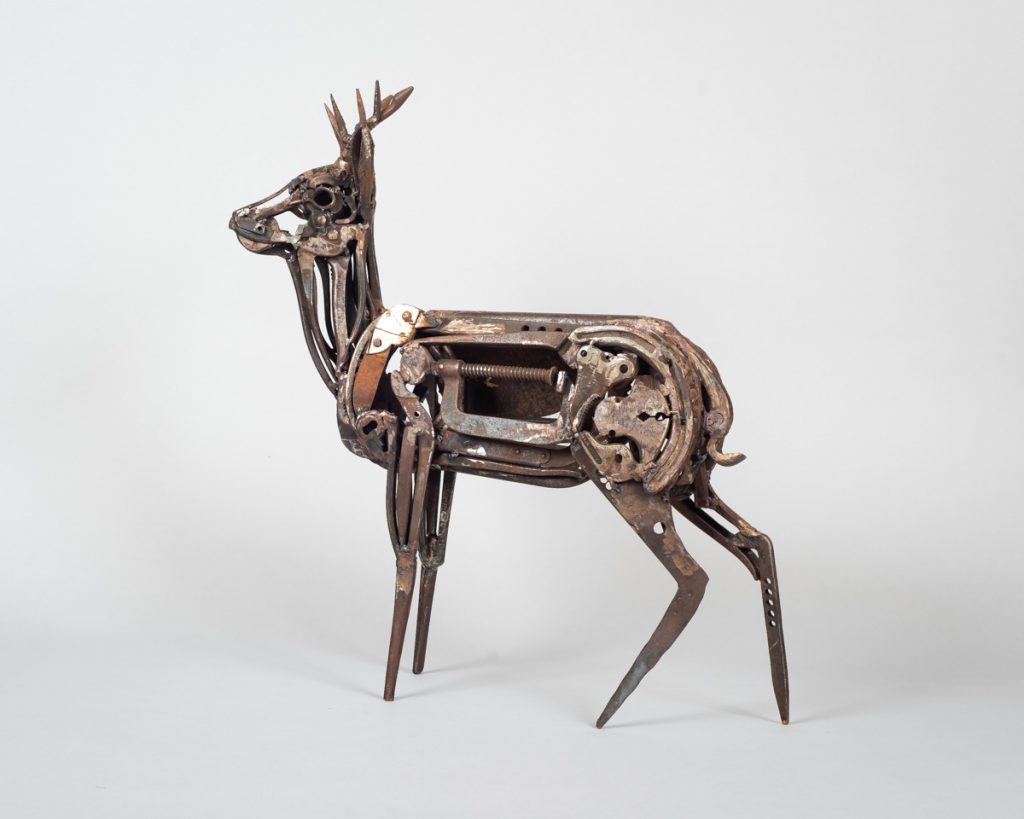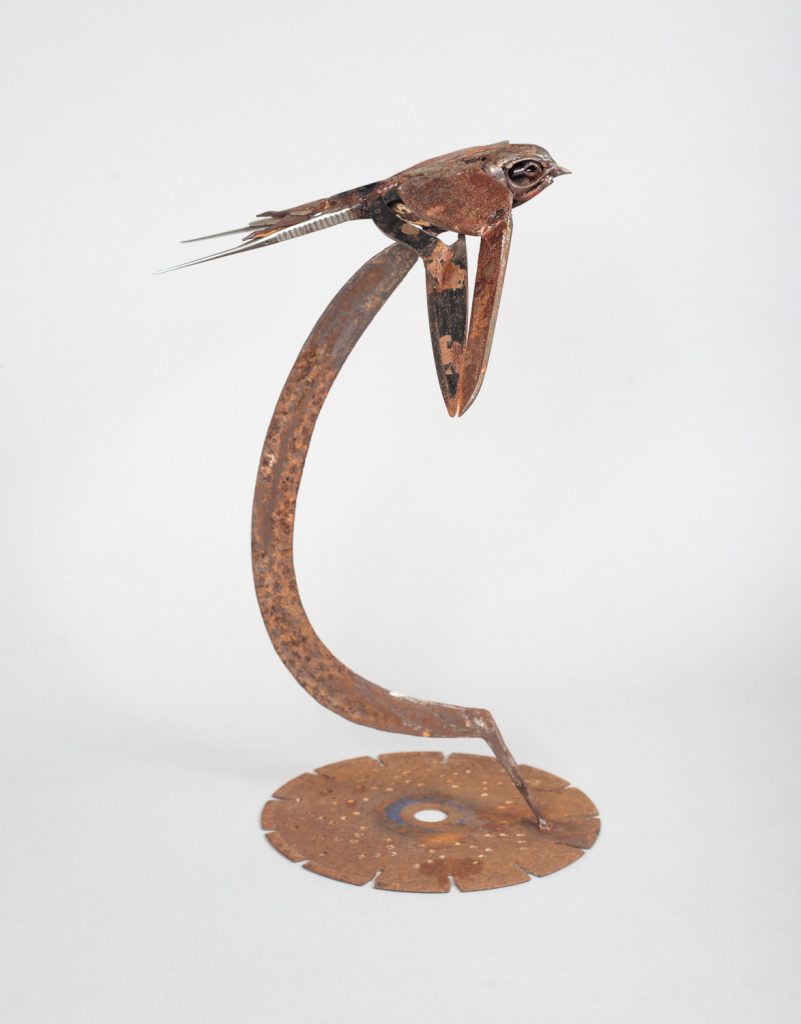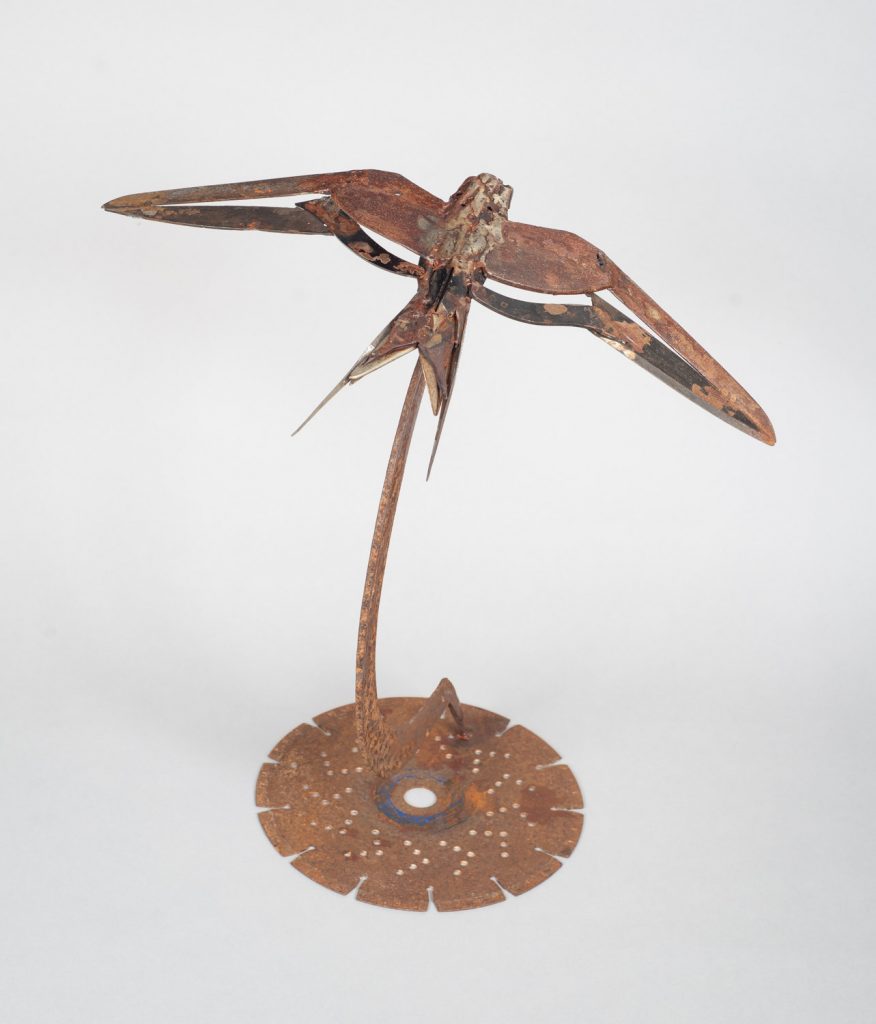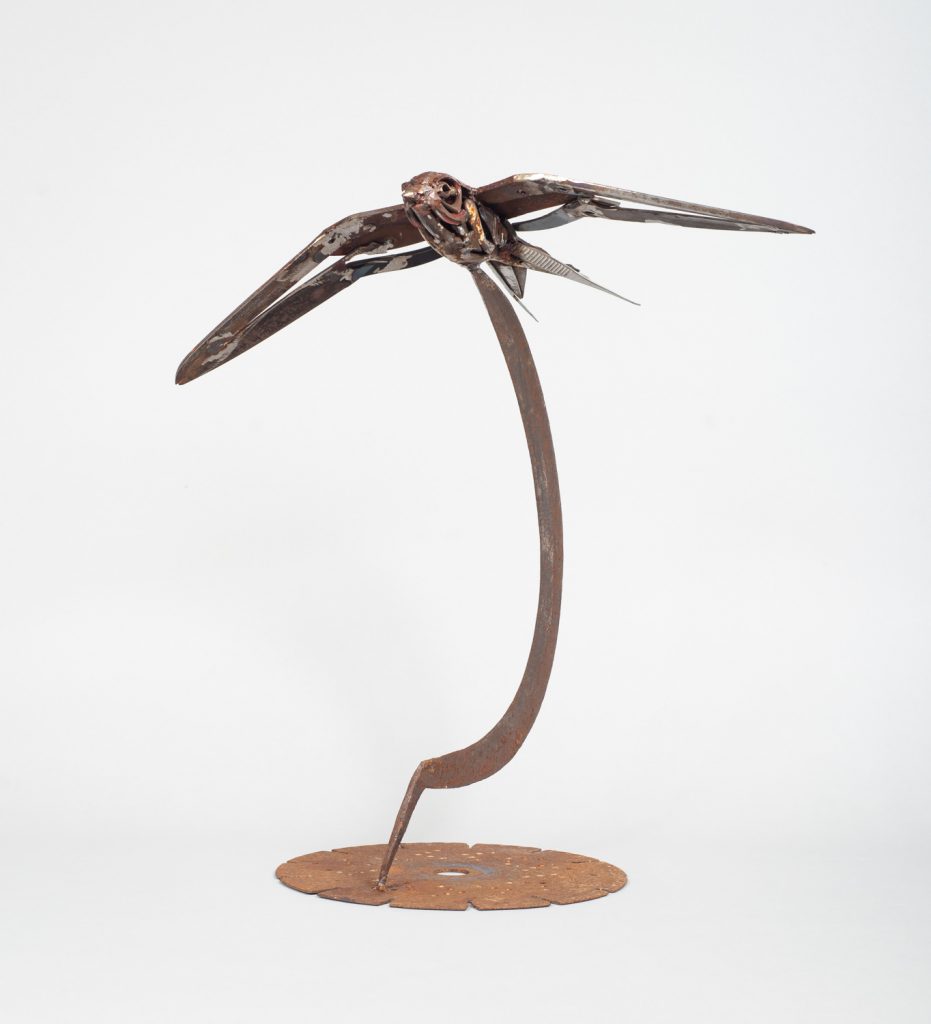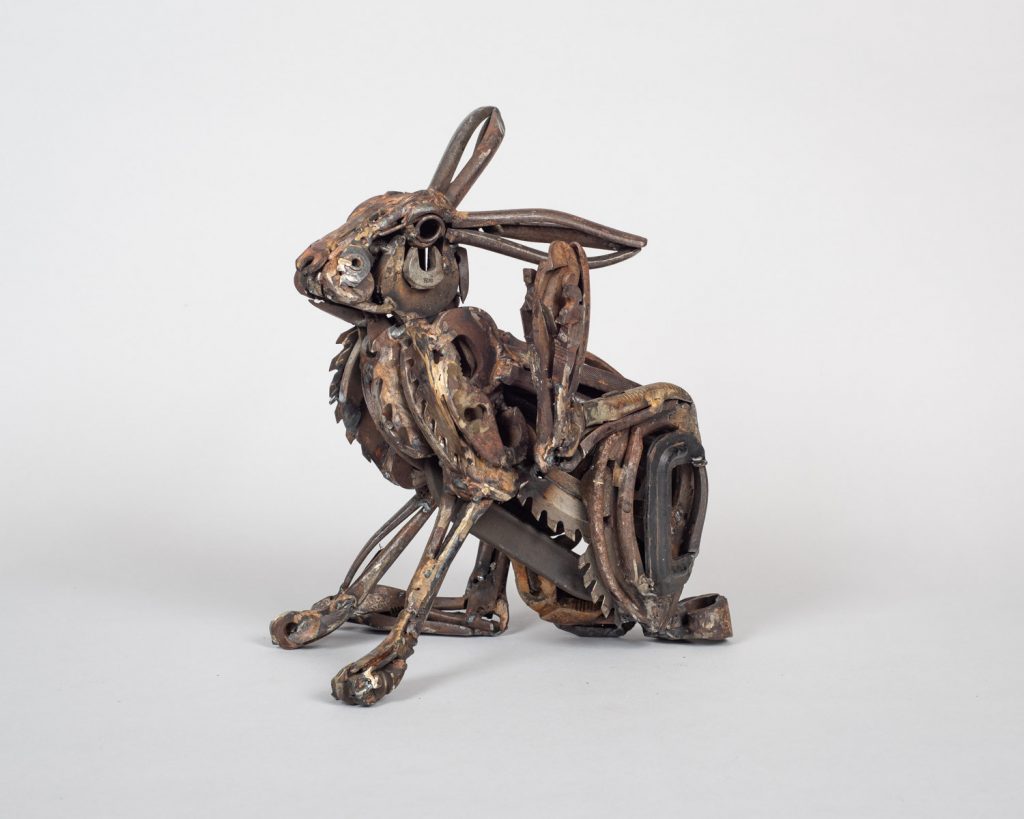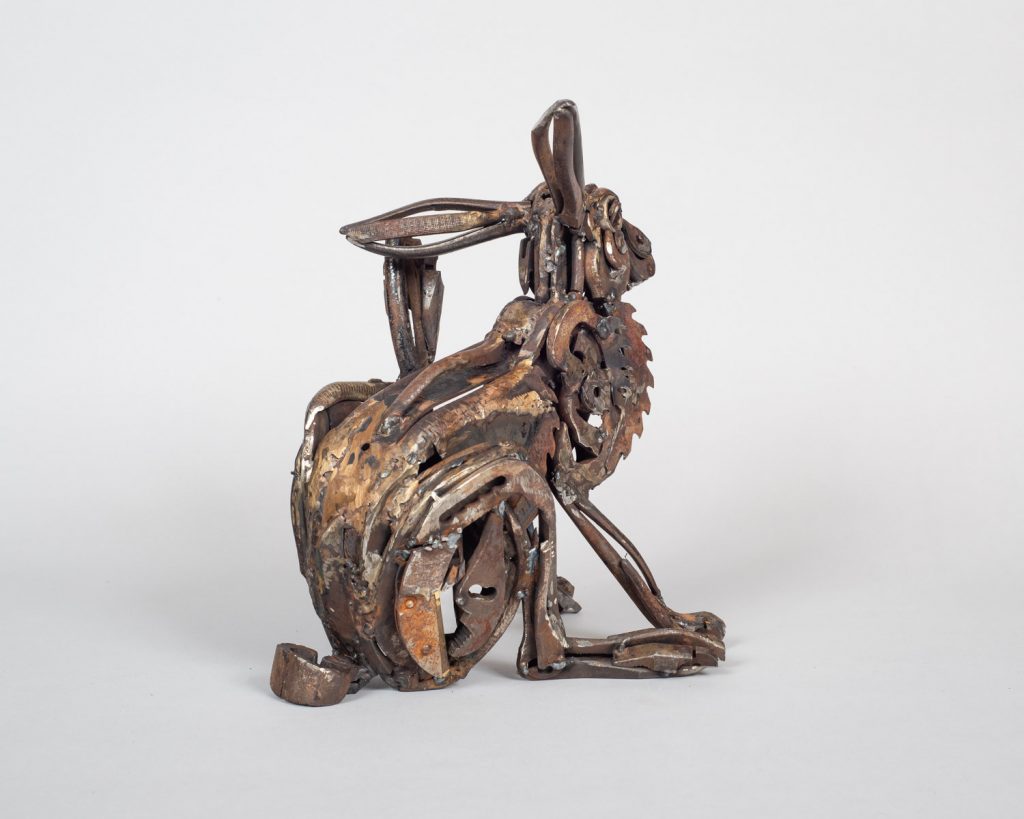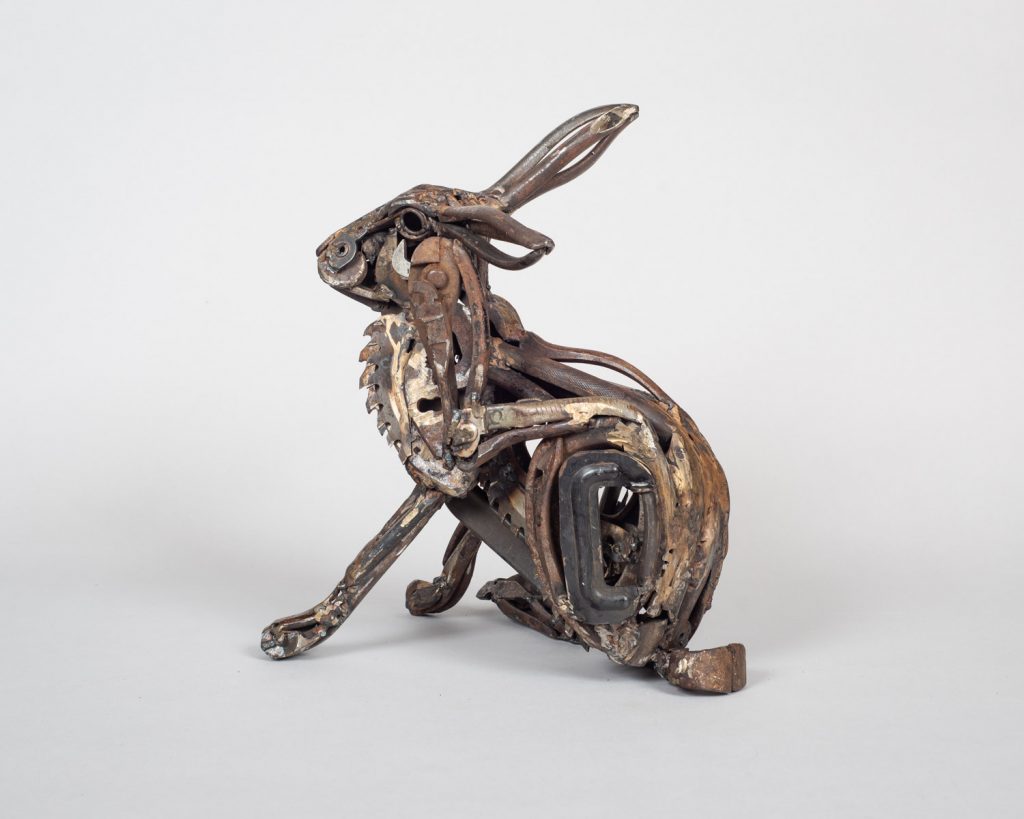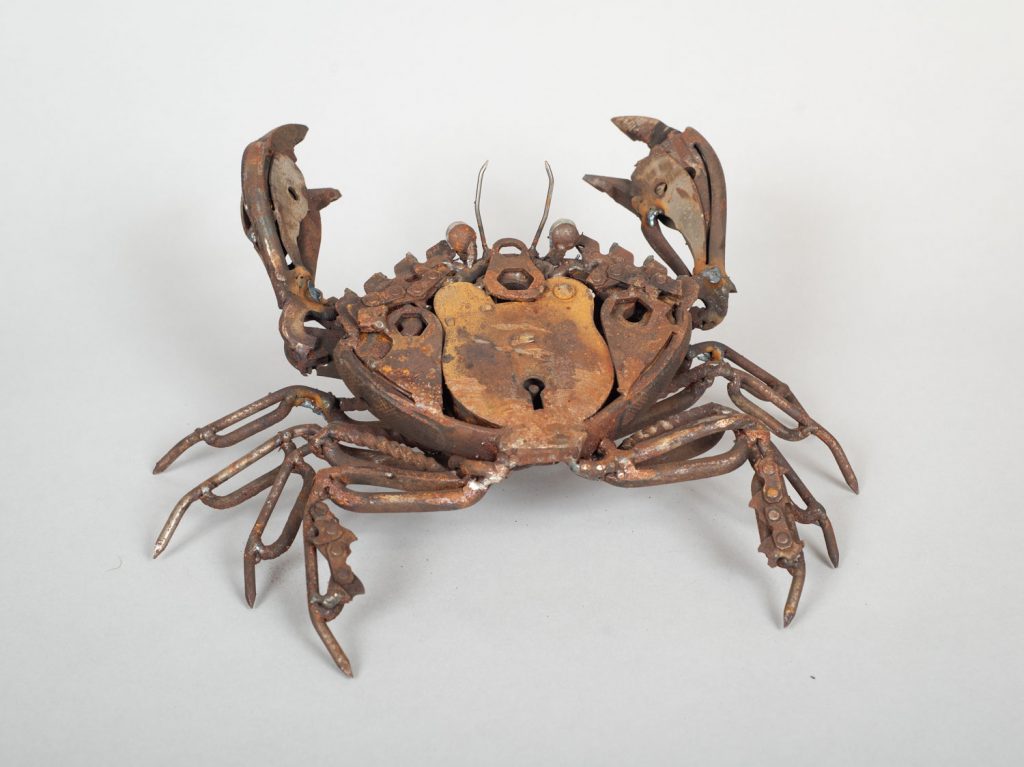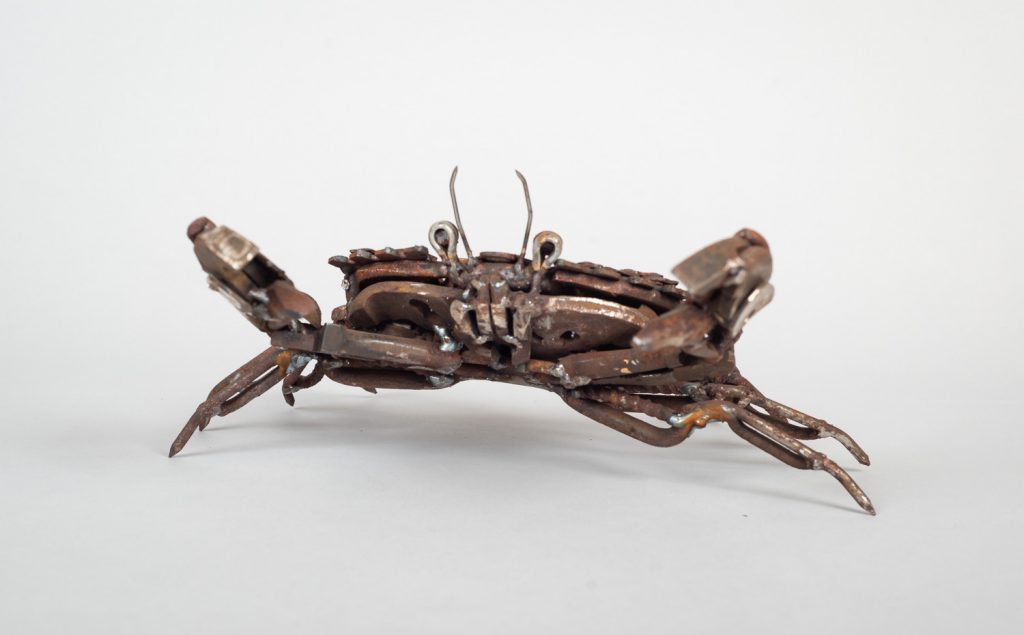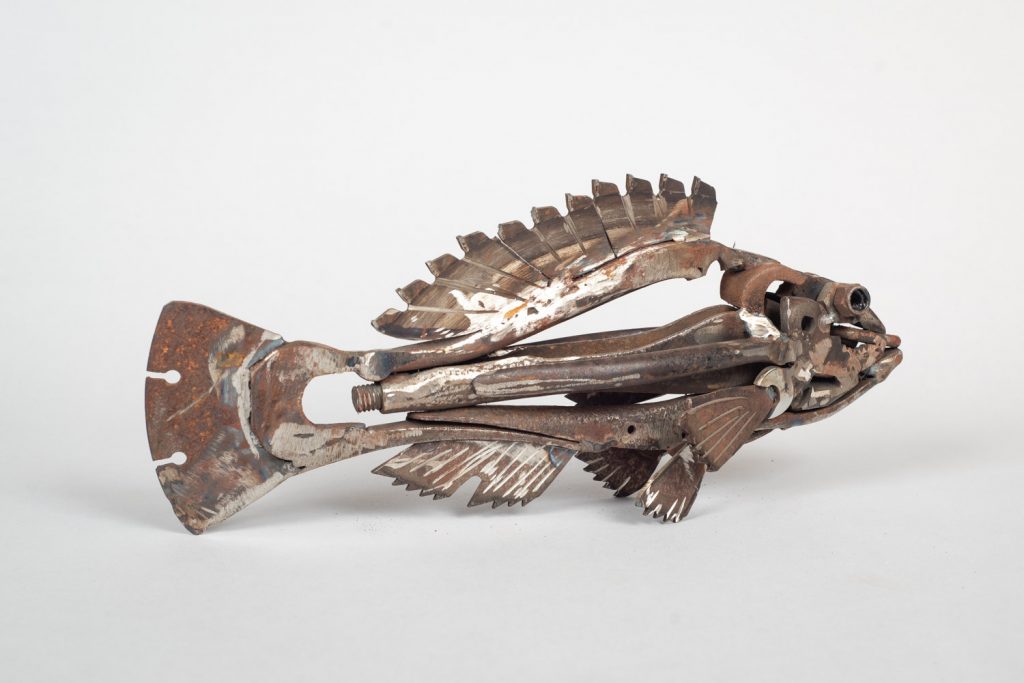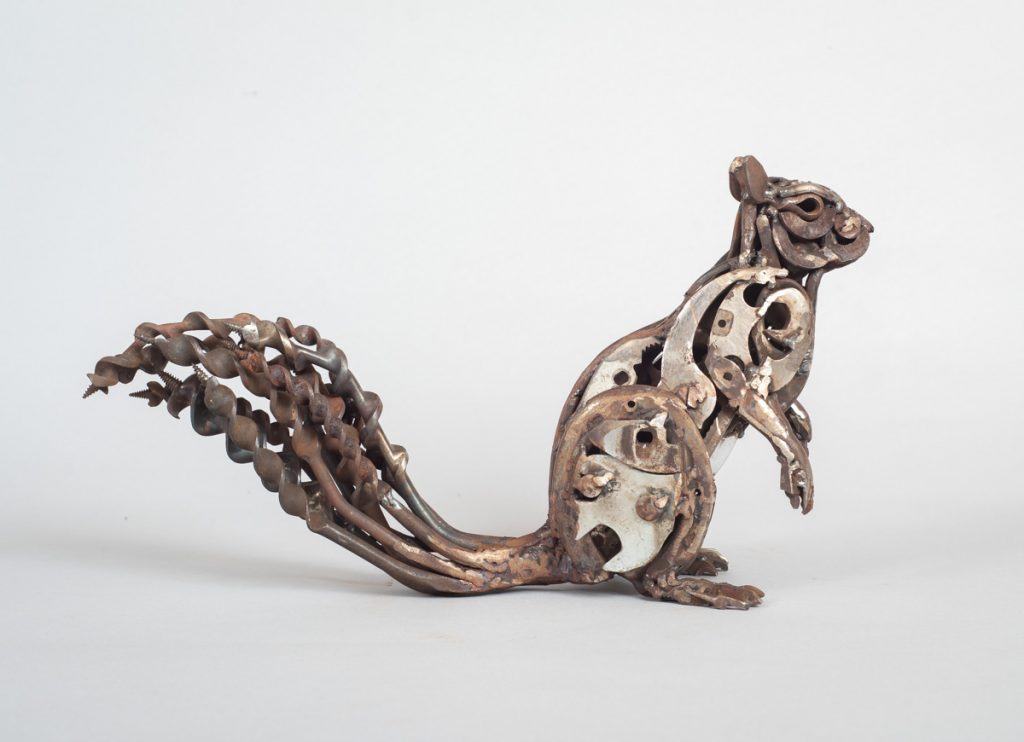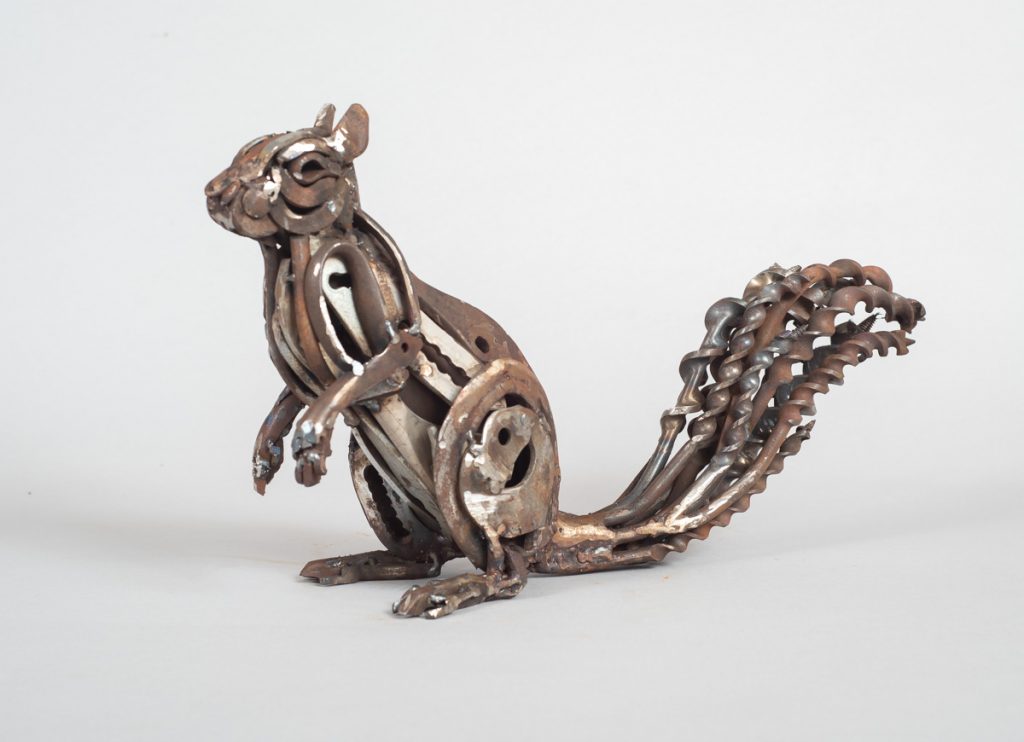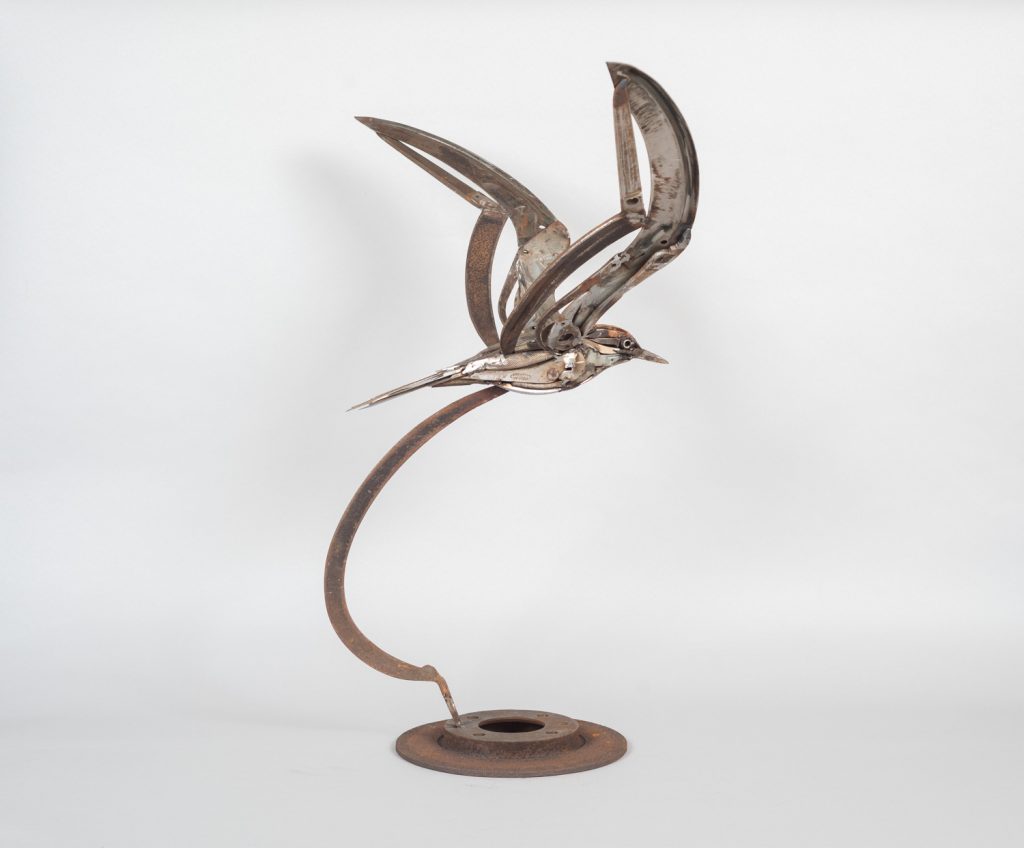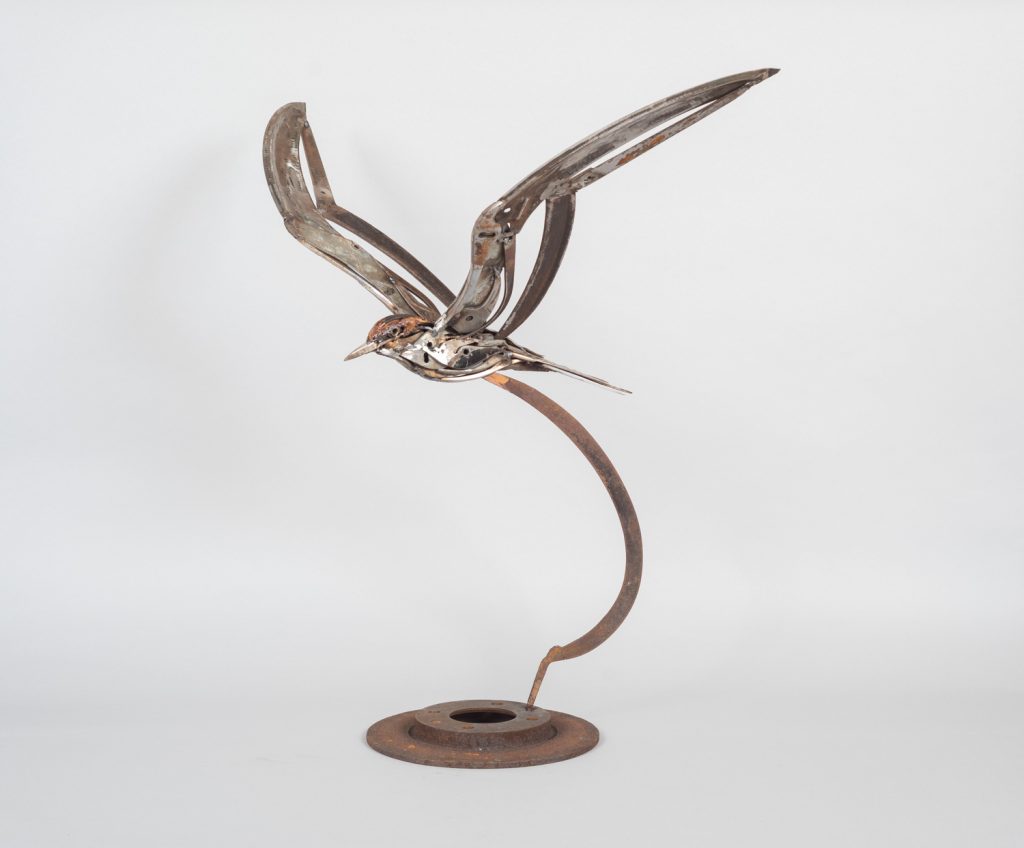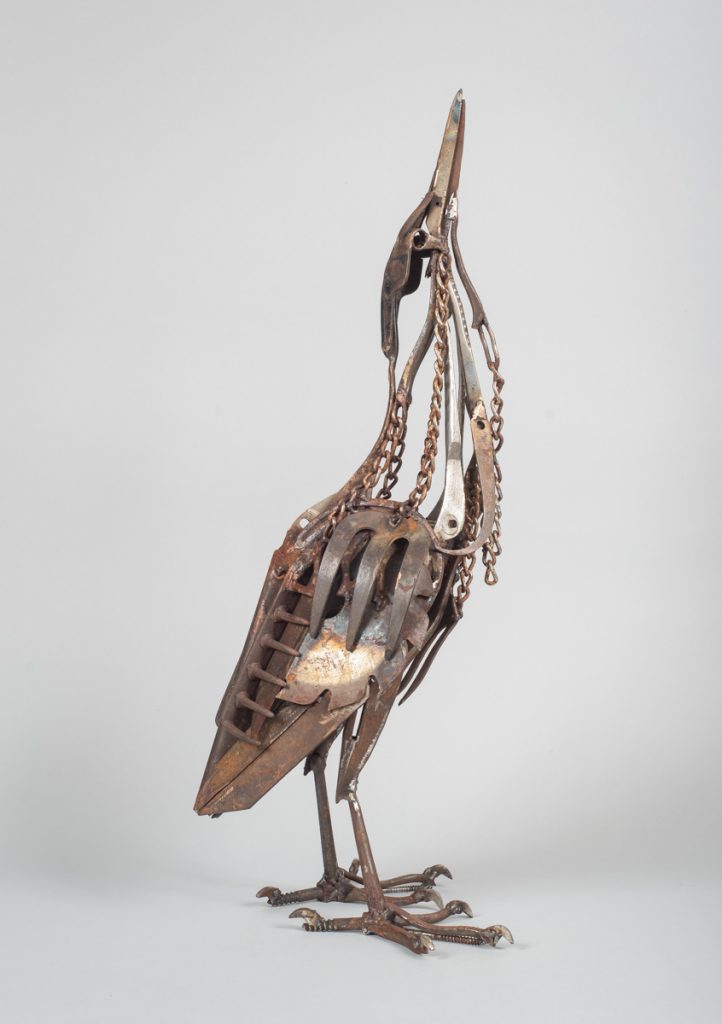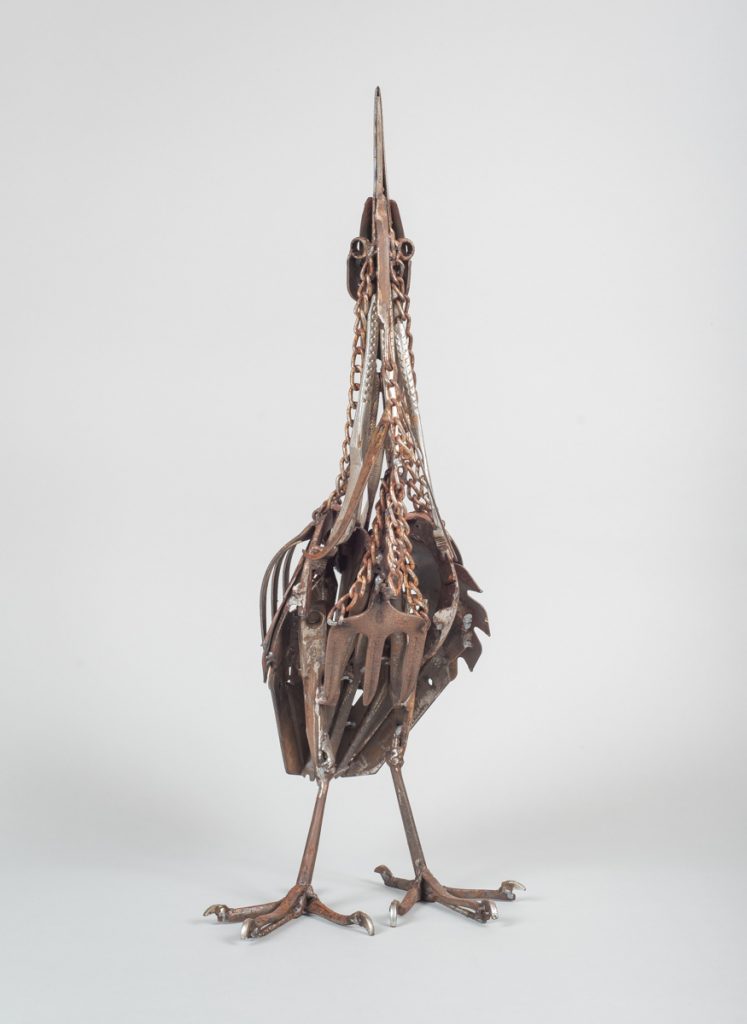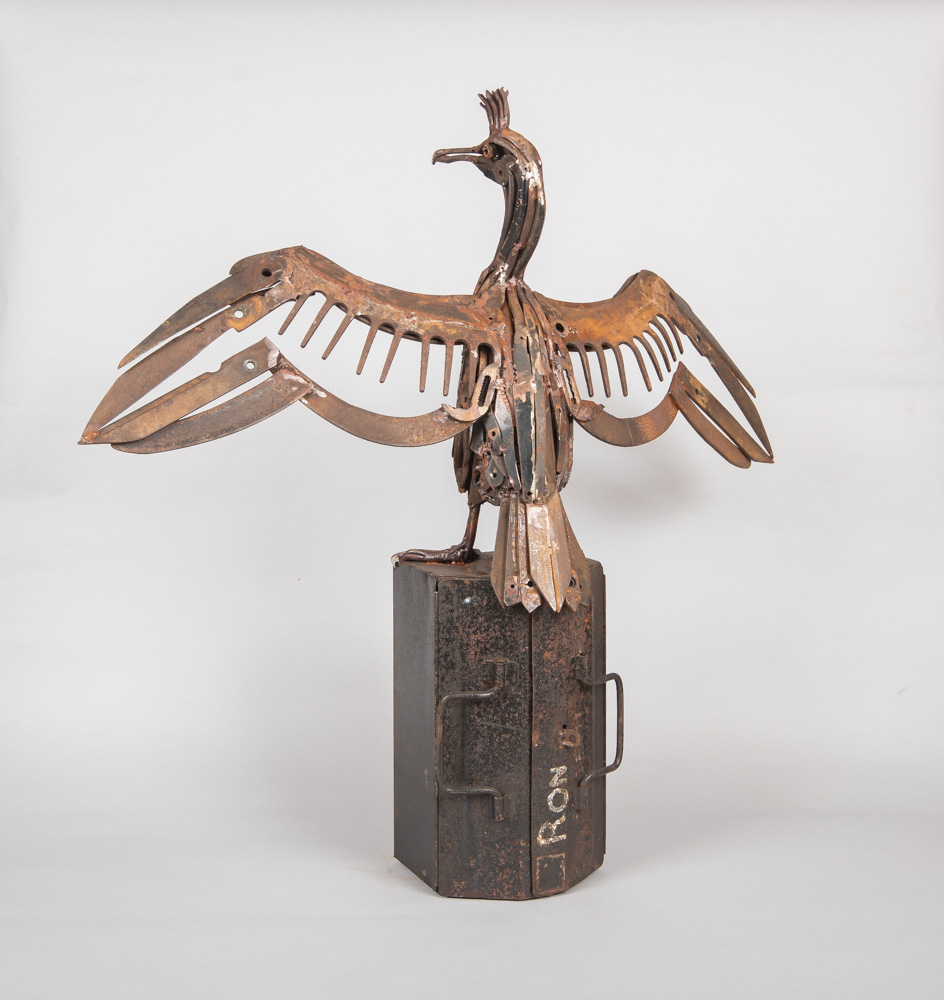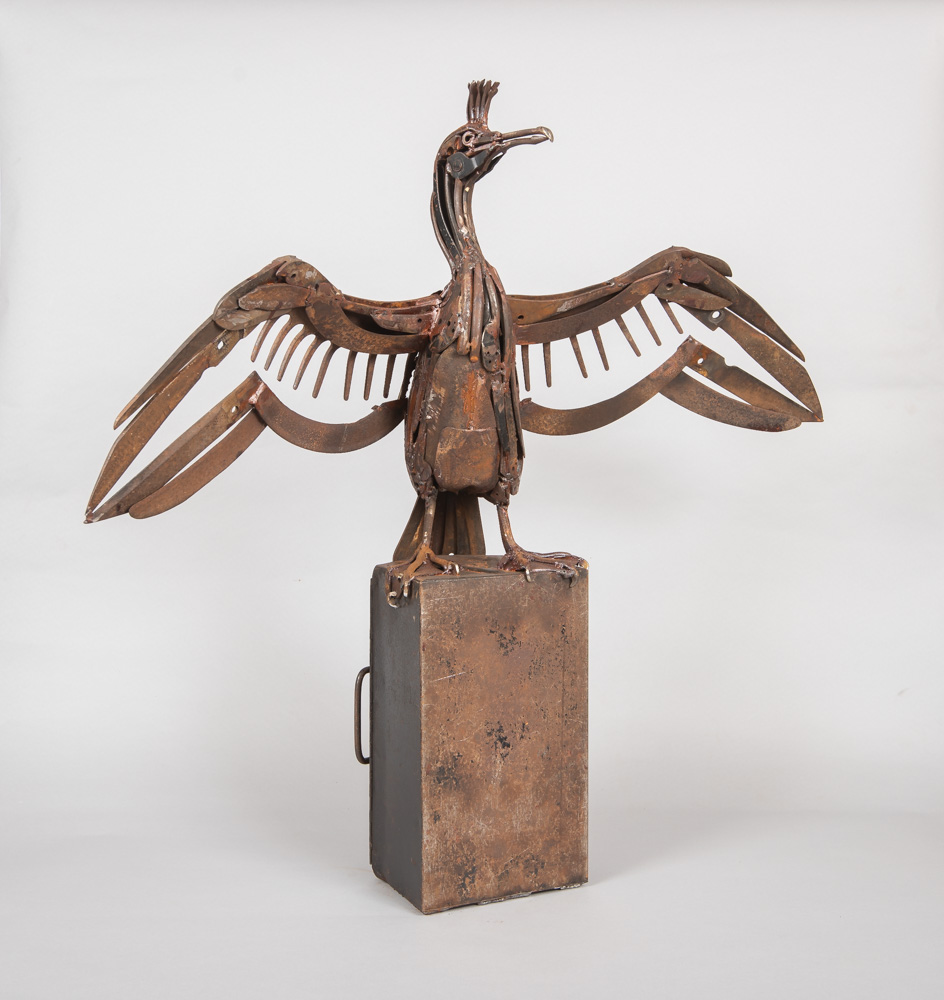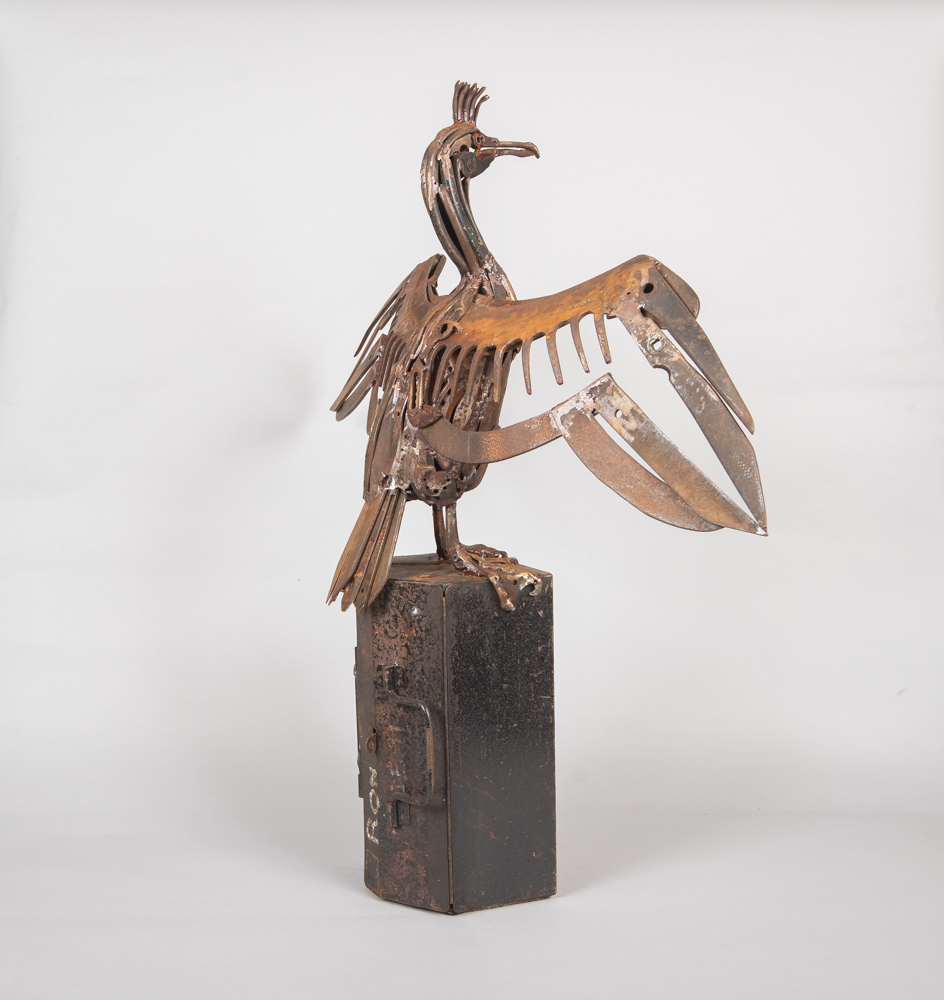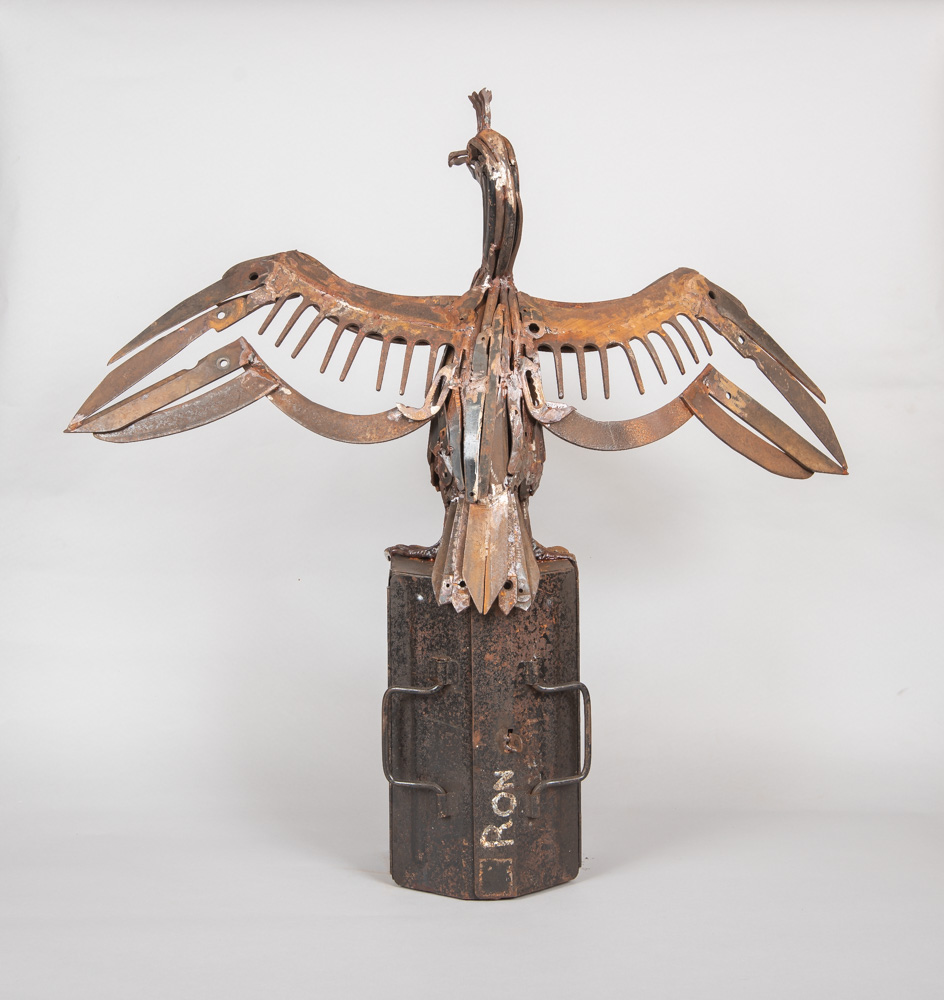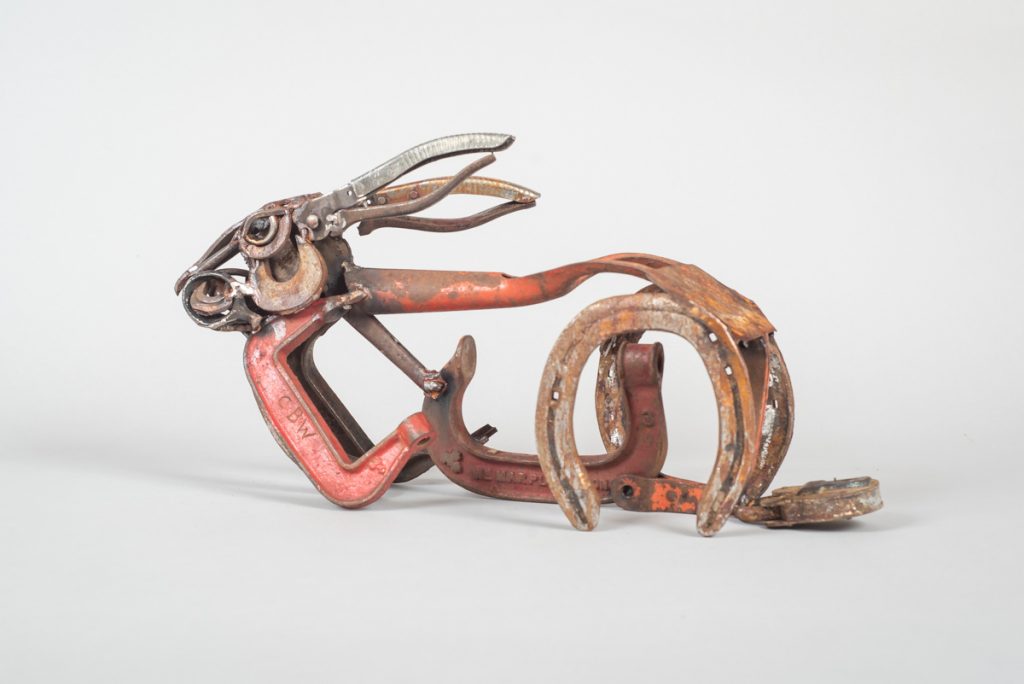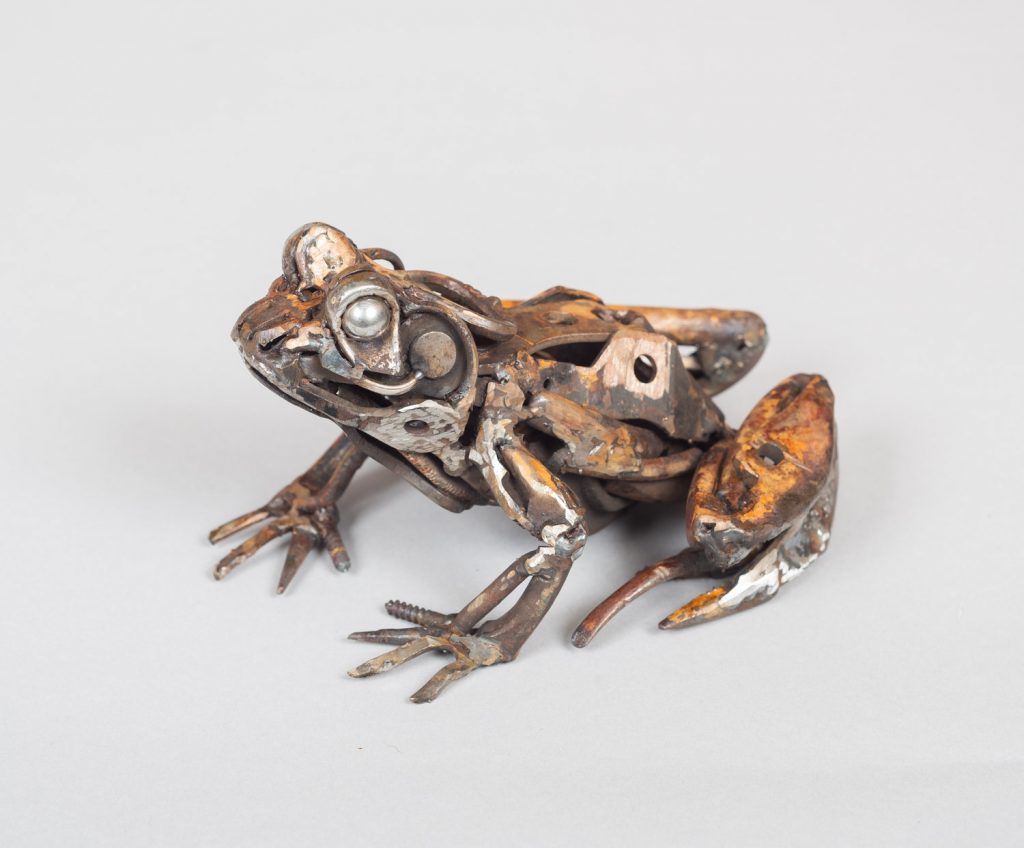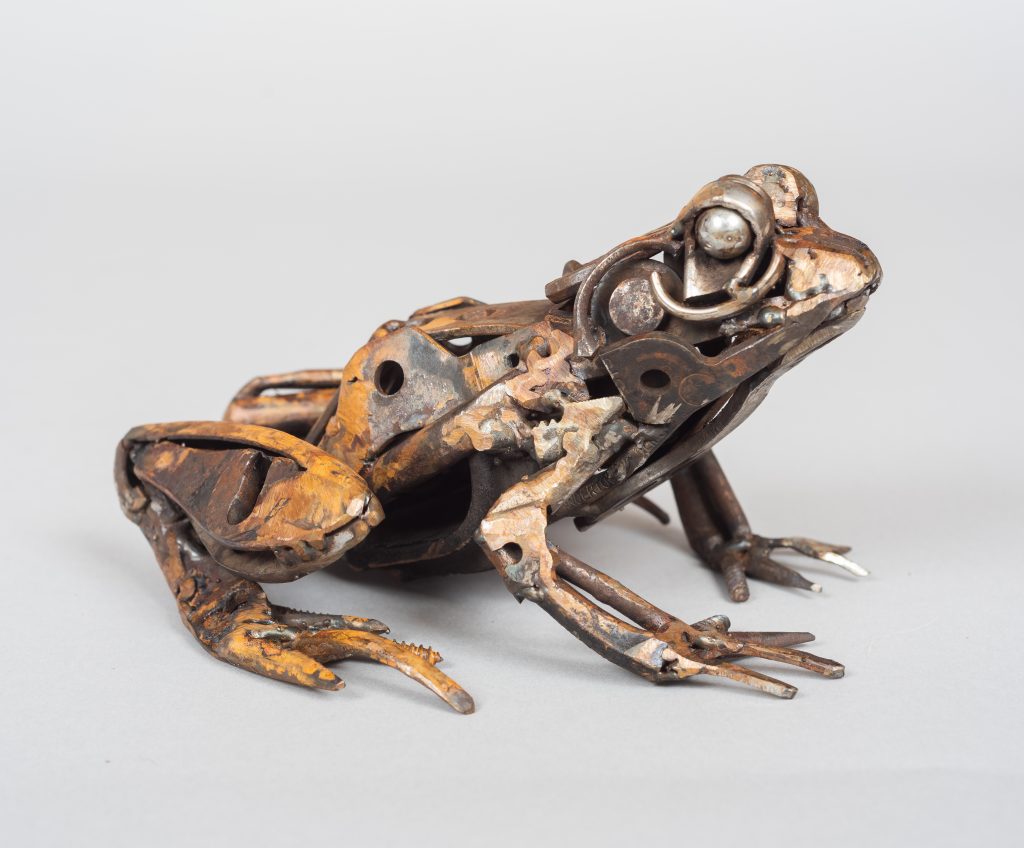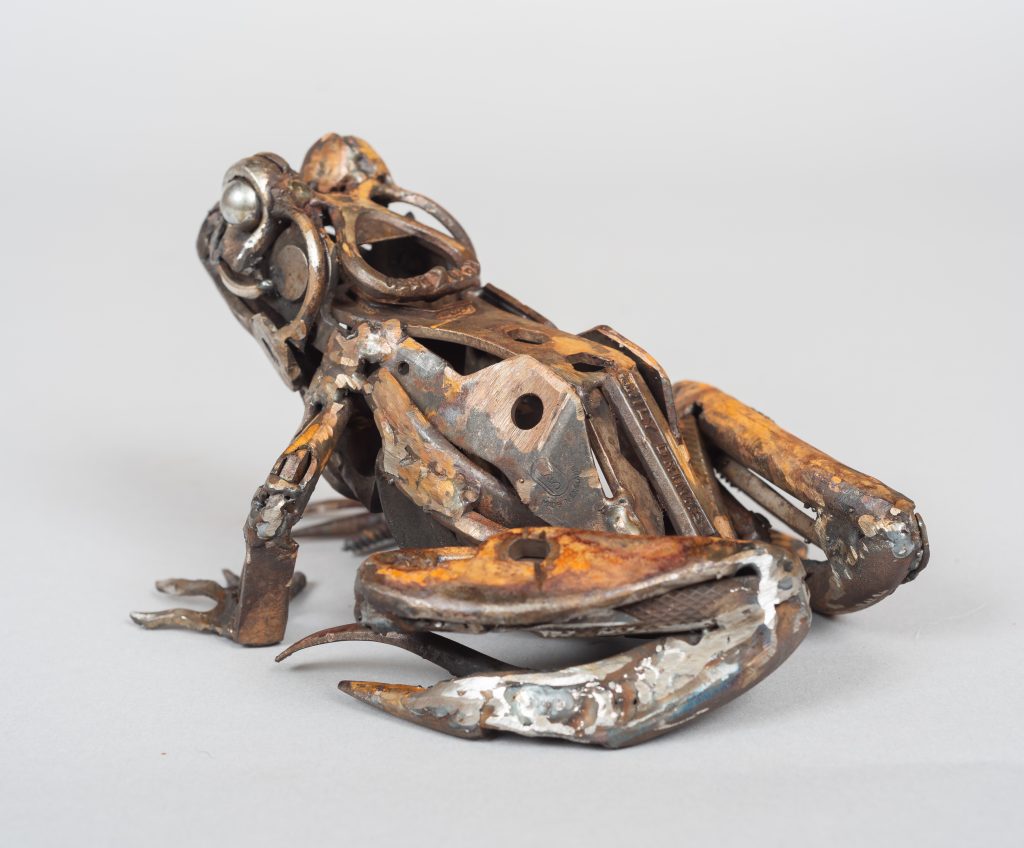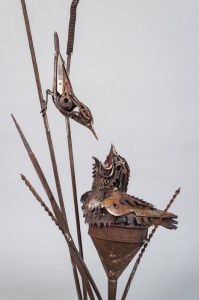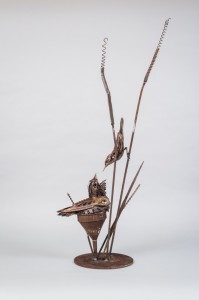
The Natural Eye is the annual exhibition of the Society of Wildlife Artists, held at the prestigious Mall Galleries in London in October. The show has over 400 works by more than a hundred artists inspired by the natural world. I have eight pieces on show.
This Long-tailed Tit was very difficult to make due to its size and the need to keep the original colour on the found objects.
I was thrilled and honoured to receive the BirdWatch and Swarovski Optik Artist of the Year Award for my Calling Raven. I am so grateful to the sponsors and judges, and look forward to making use of my new Swarovski spotting scope.
Another calling bird, Calling Curlew was inspired by seeing and hearing a few pairs on the farmland near my home.


The Flying Nightjar was inspired after I was lucky enough to see excellent views of displaying males at dusk in the summer. There were several pairs in one patch of clear fell forest, which seemed to encourage much earlier activity from the territorial males of this nocturnal bird.
My selection of sculptures are not all birds though, I had a lot of fun making Mattock Backed Sea Turtle.
I enjoyed making a perch. The stripes on the body and the upright dorsal fin really plays to my materials. I was pleased to get it to balance on the pelvic fins.
Itchy Nose, a study of a hare grooming itself and Chain Tawny Owl completed my selection of pieces.














































